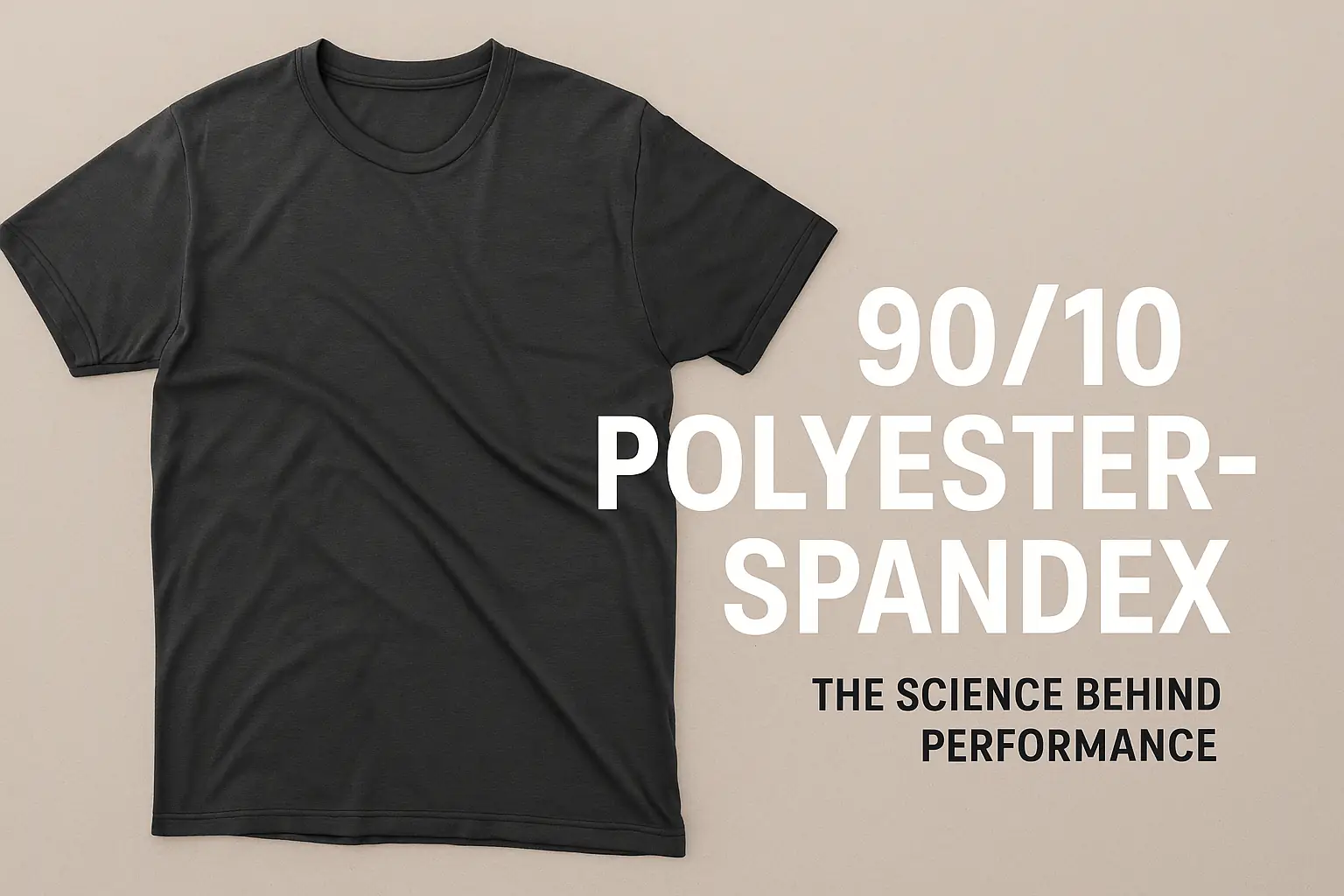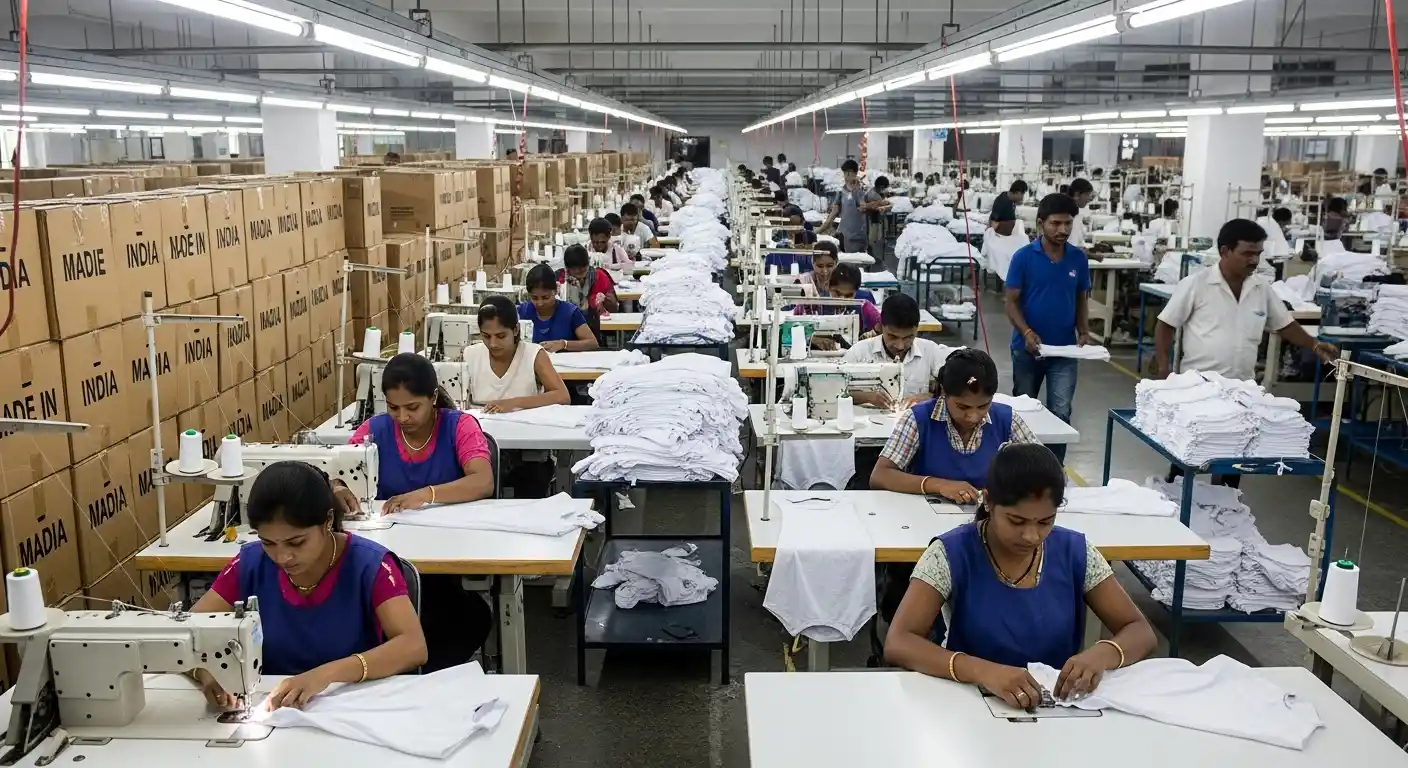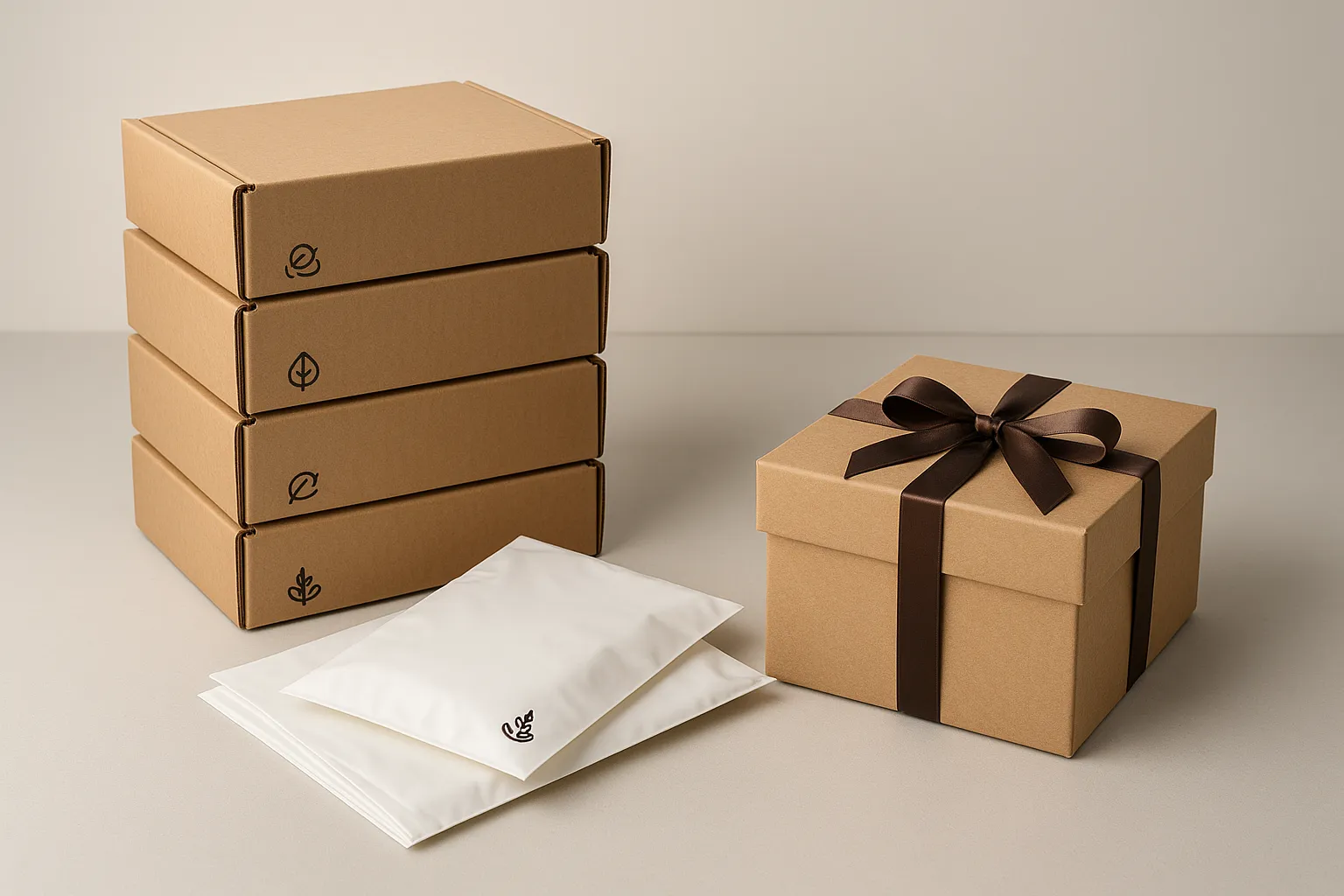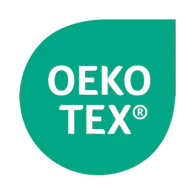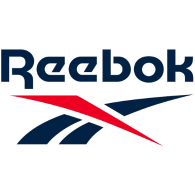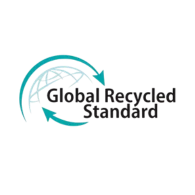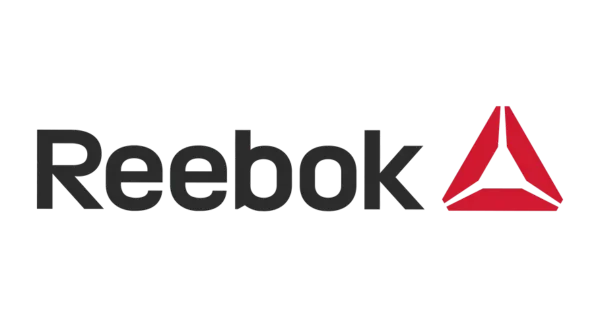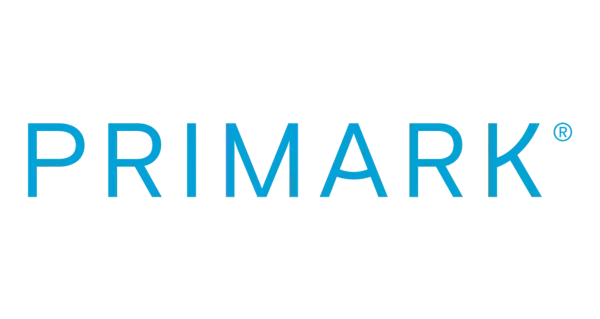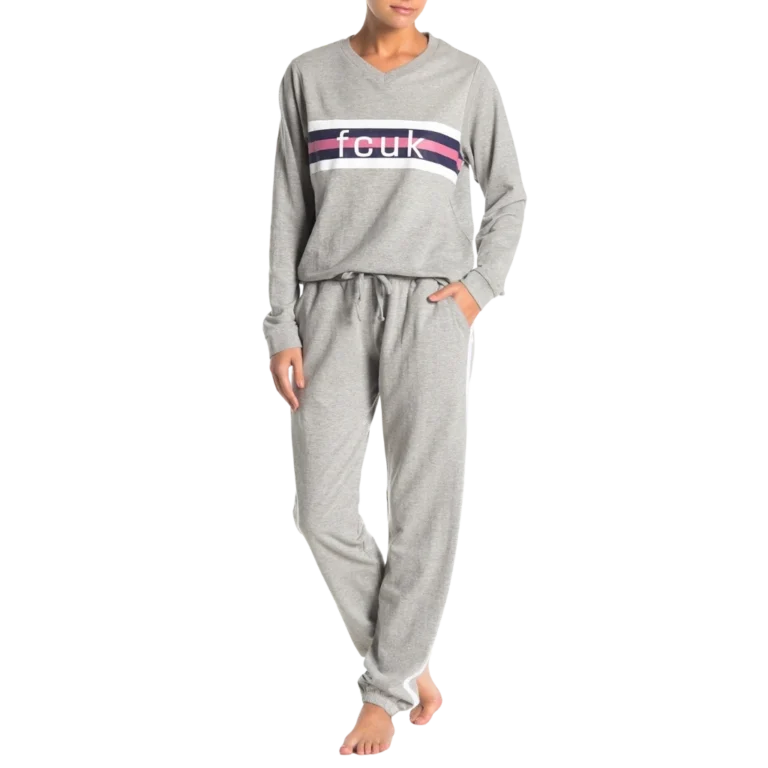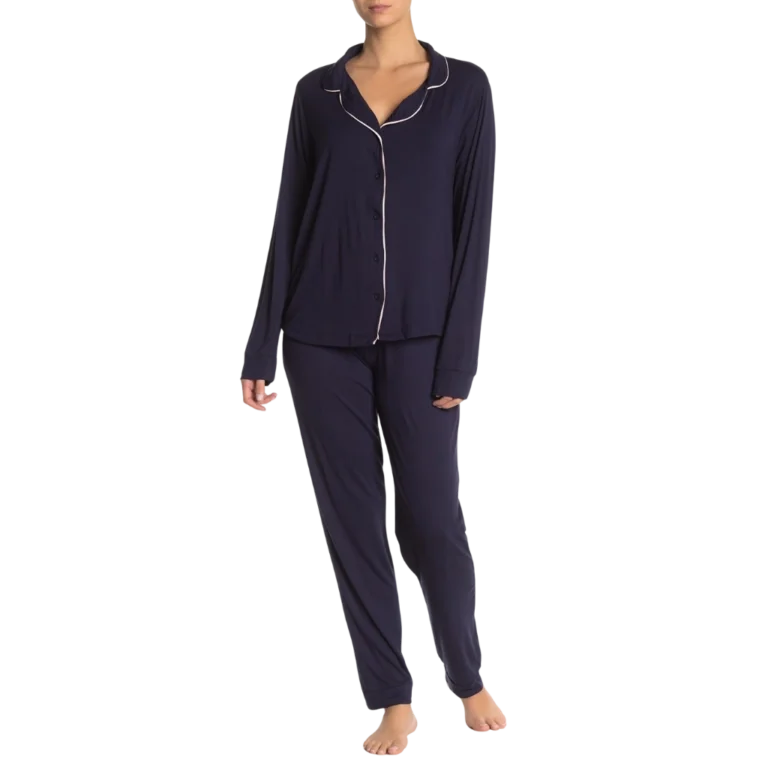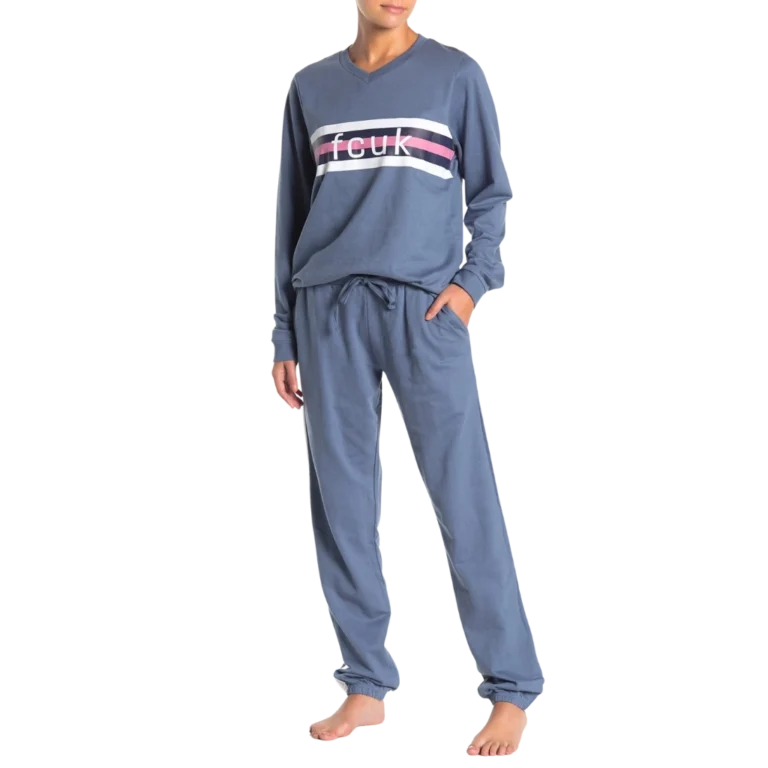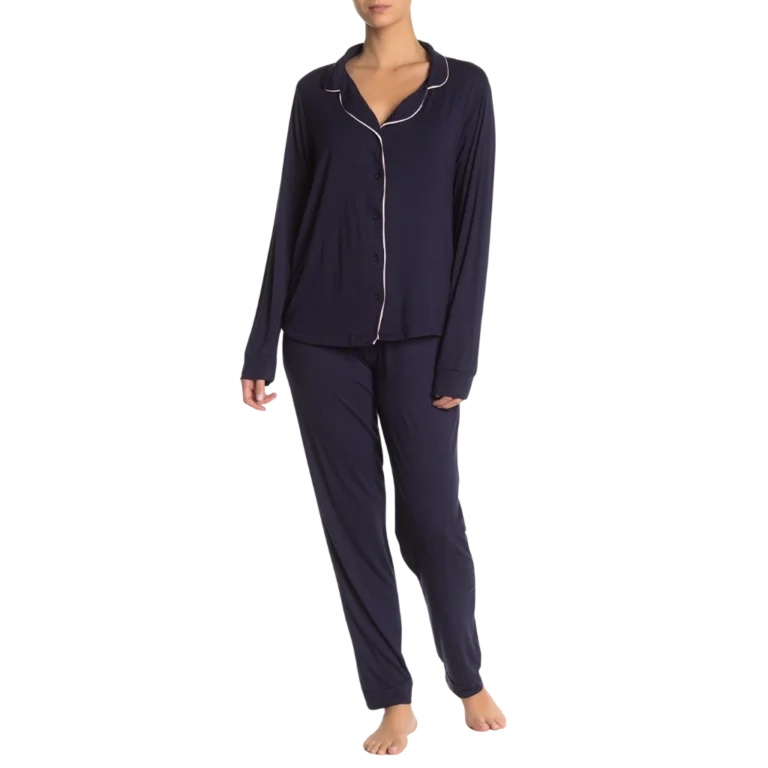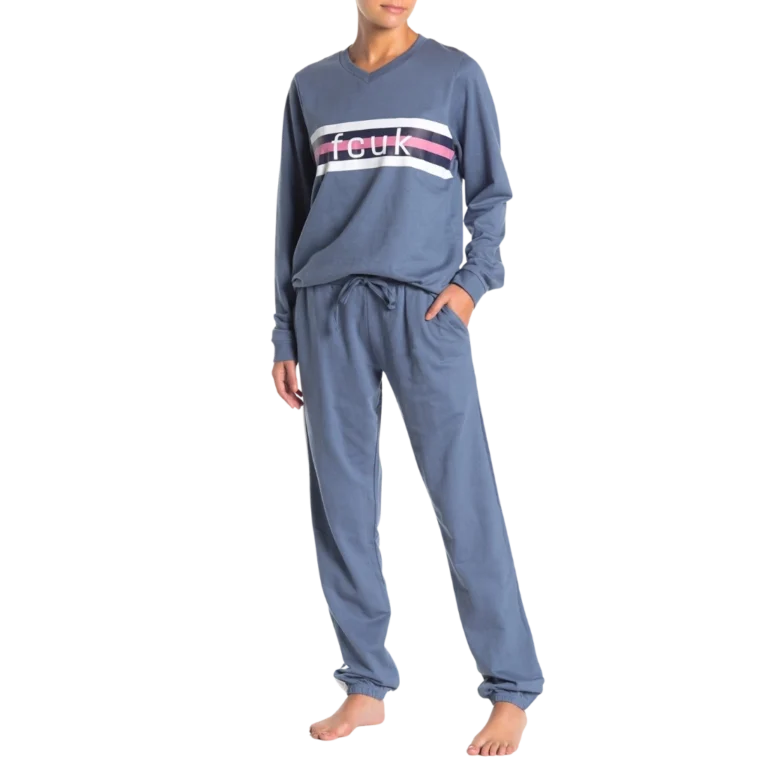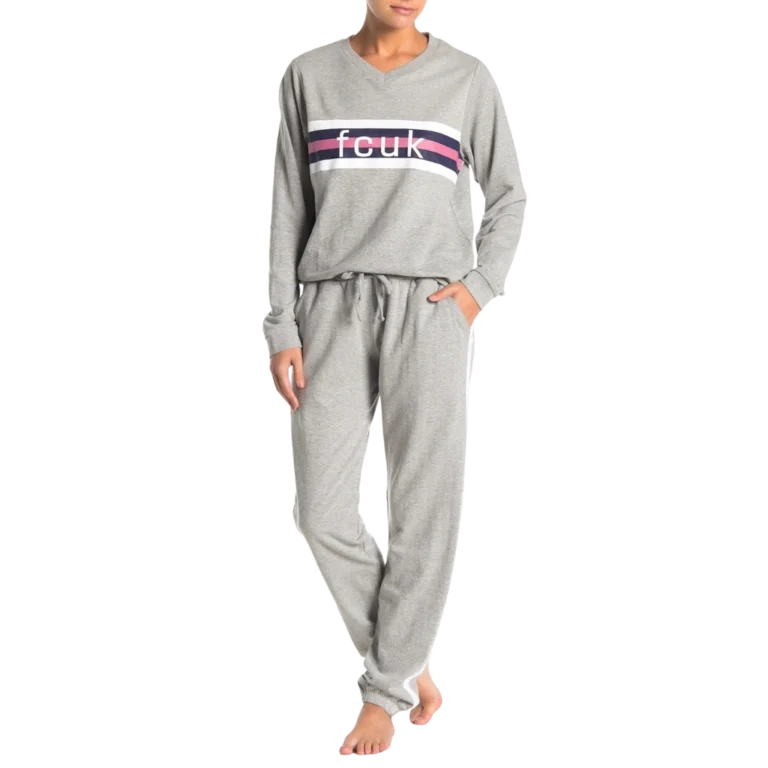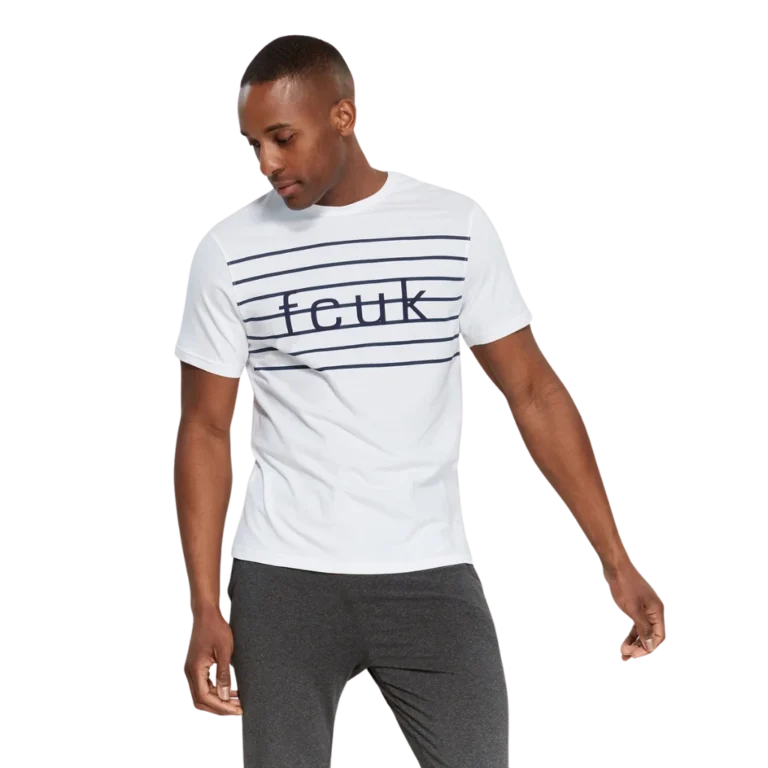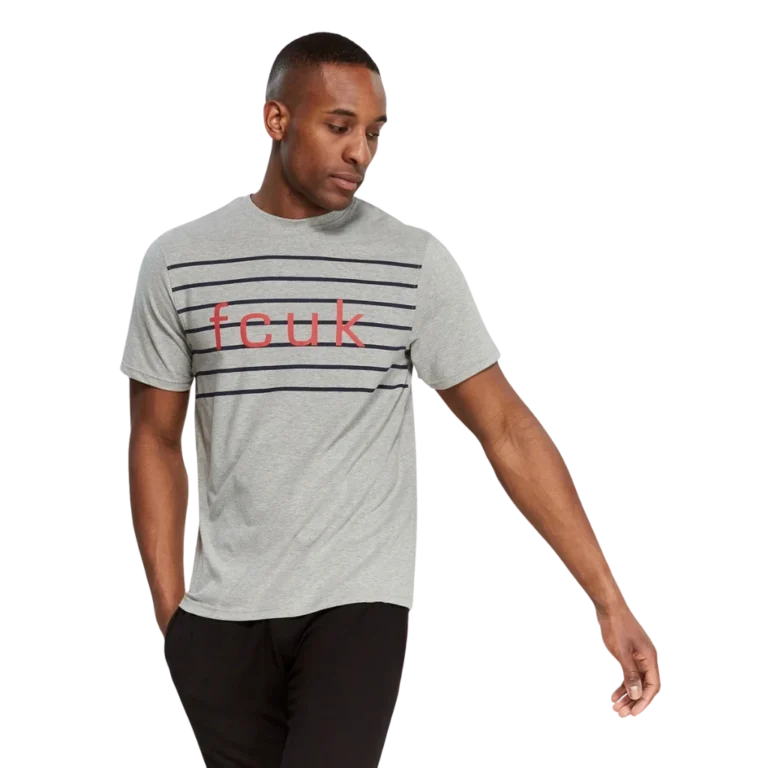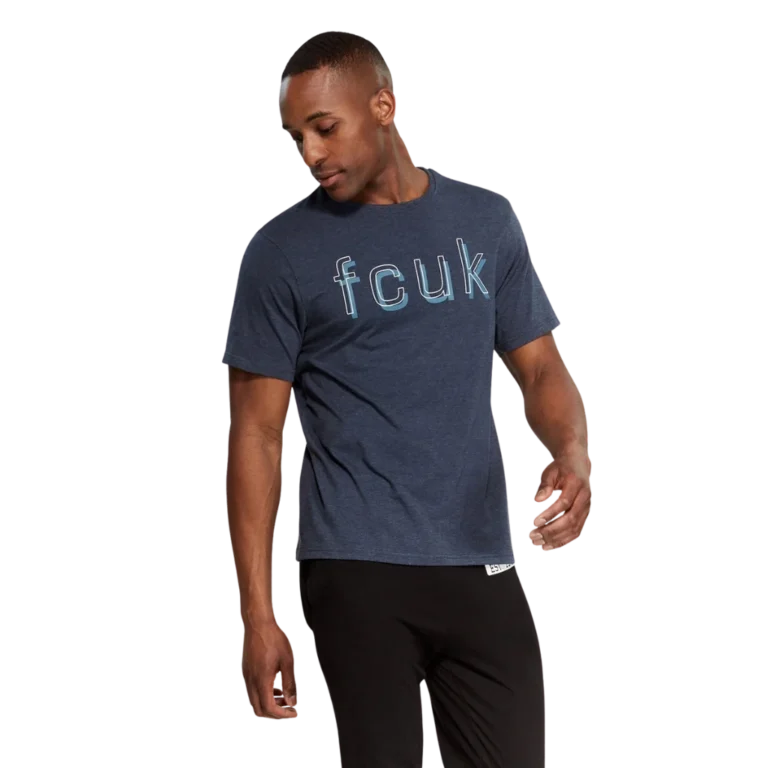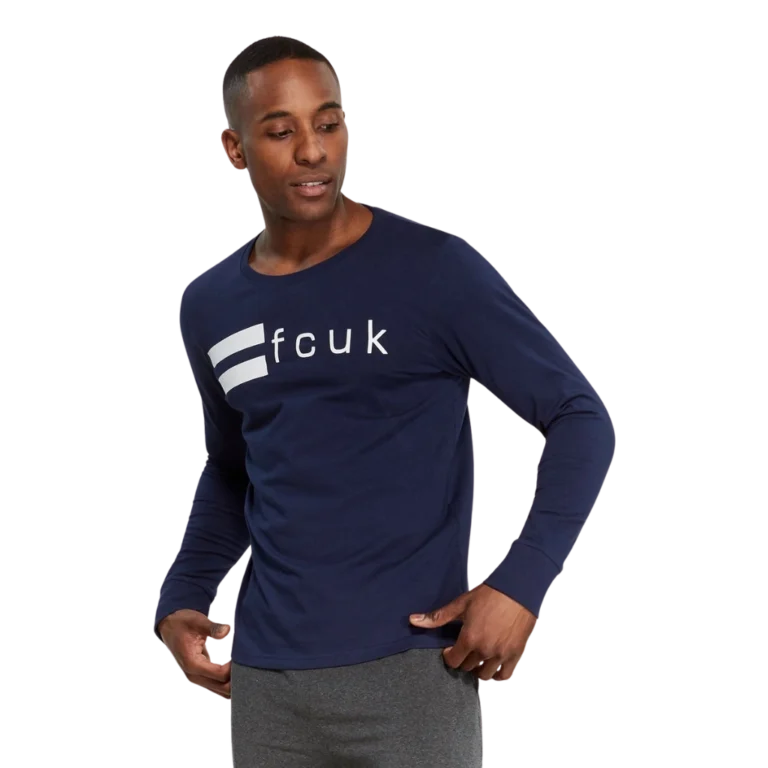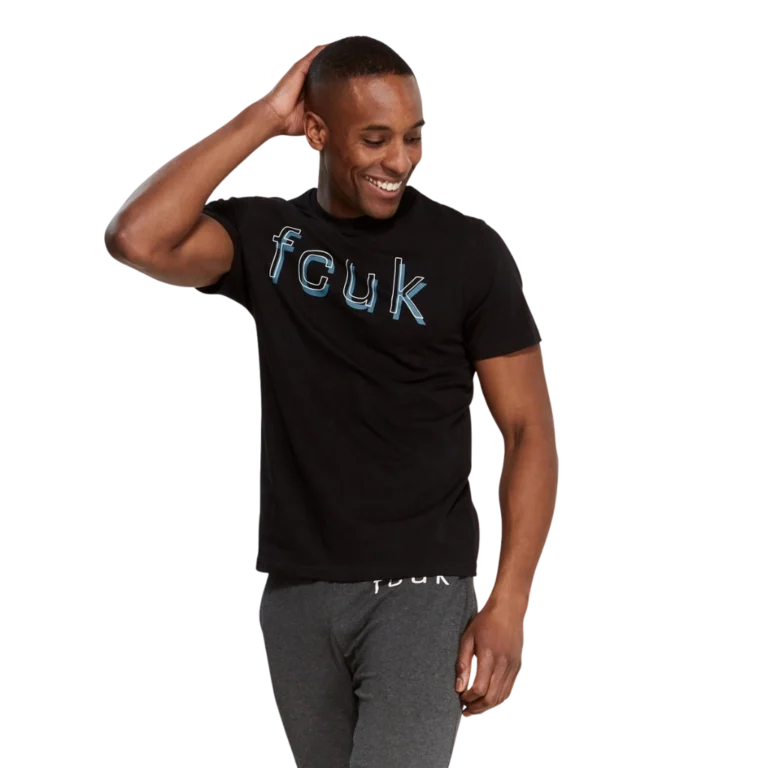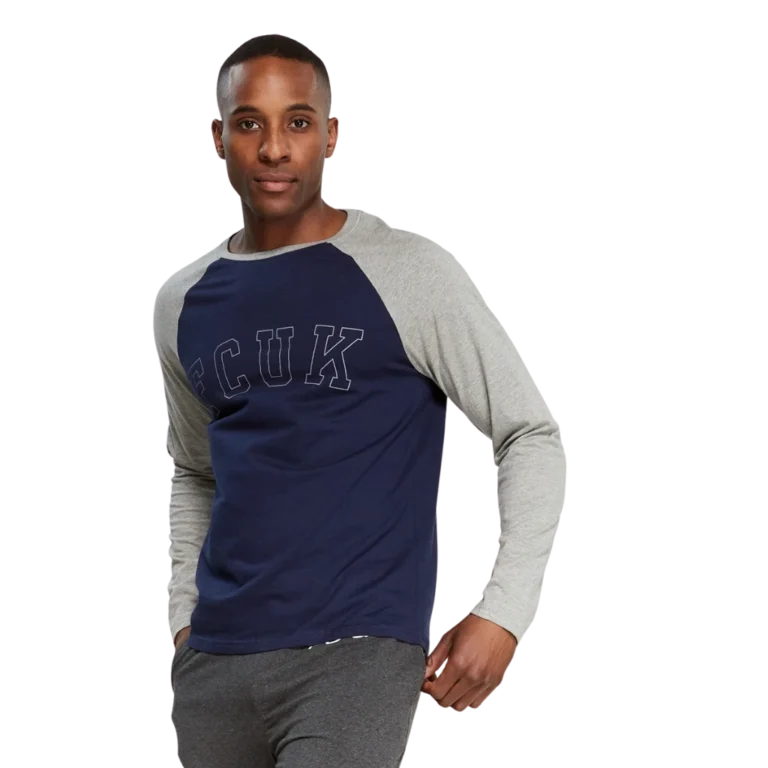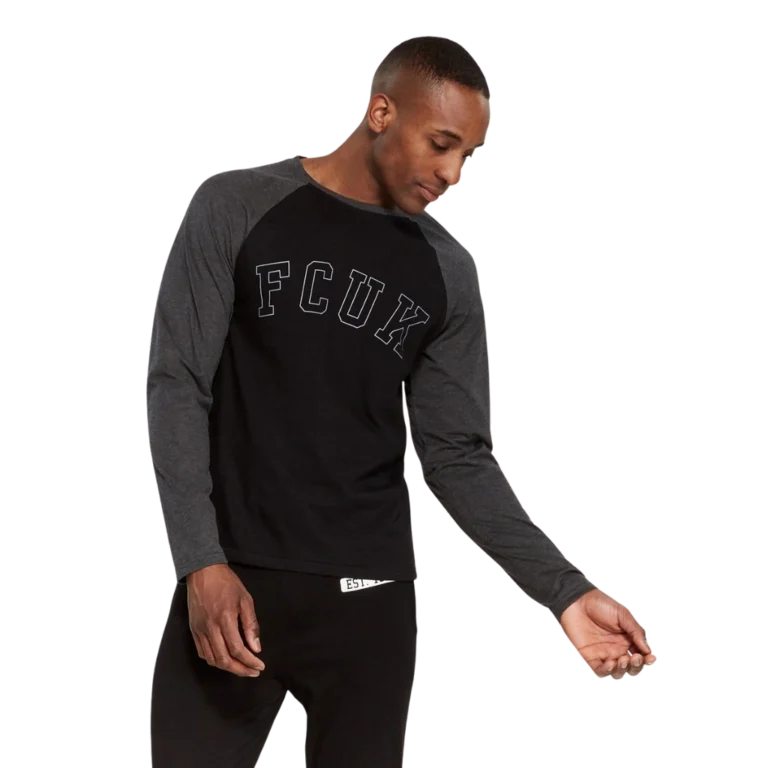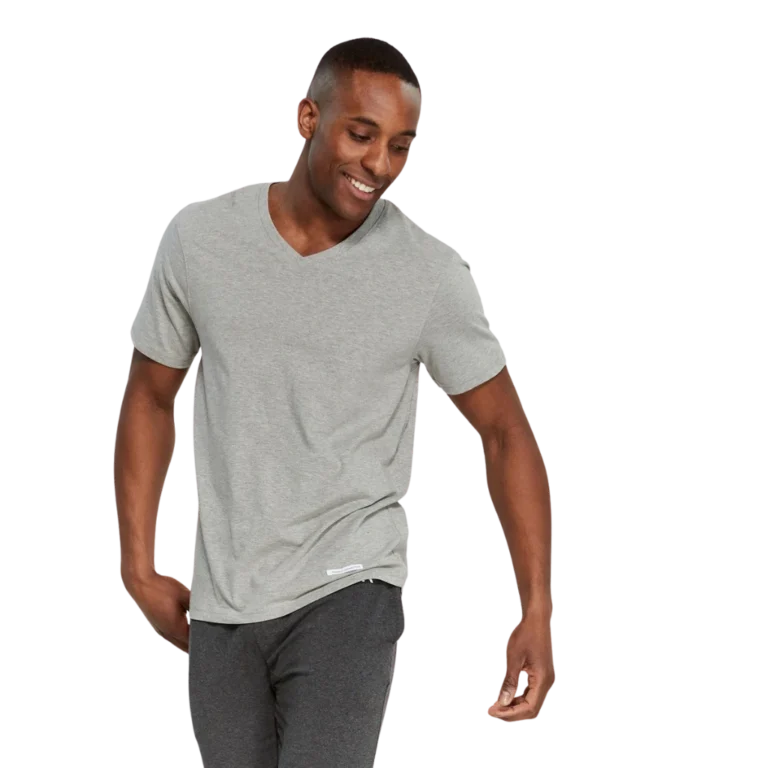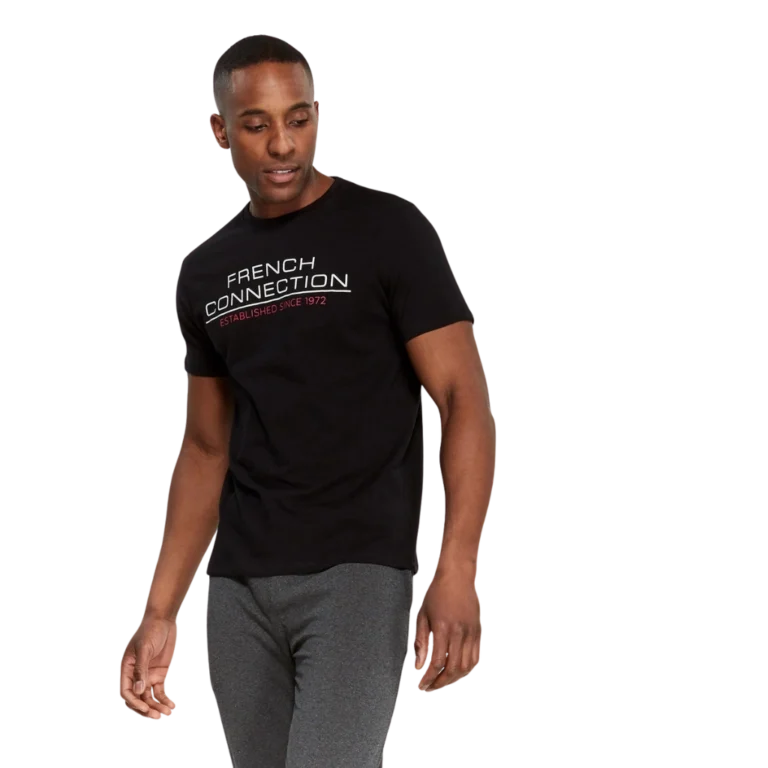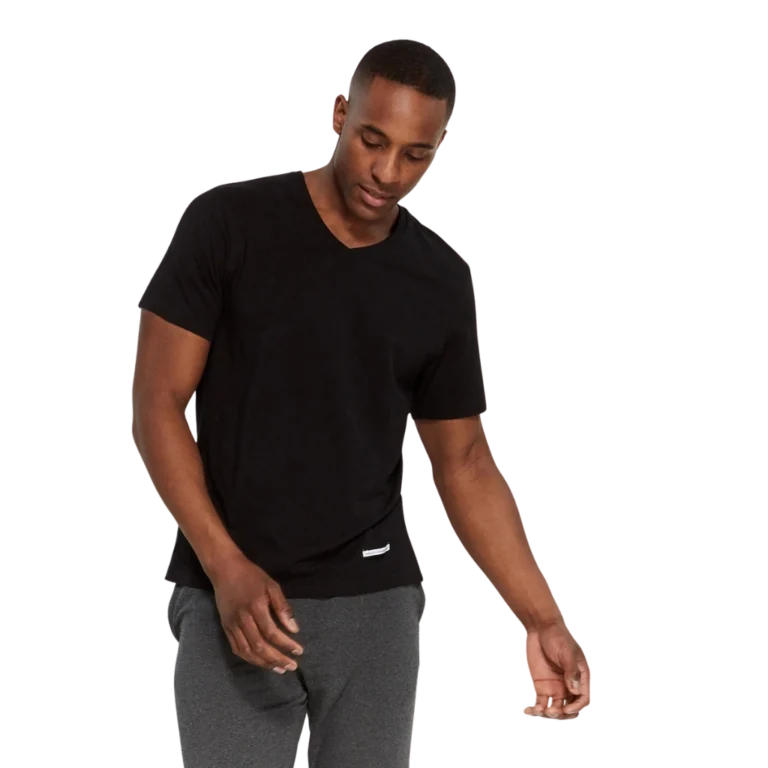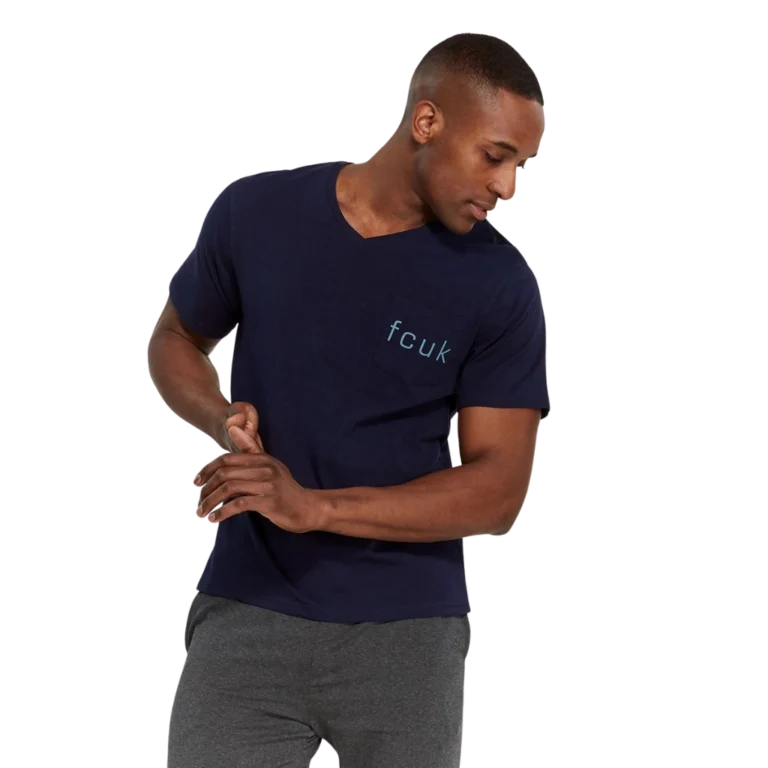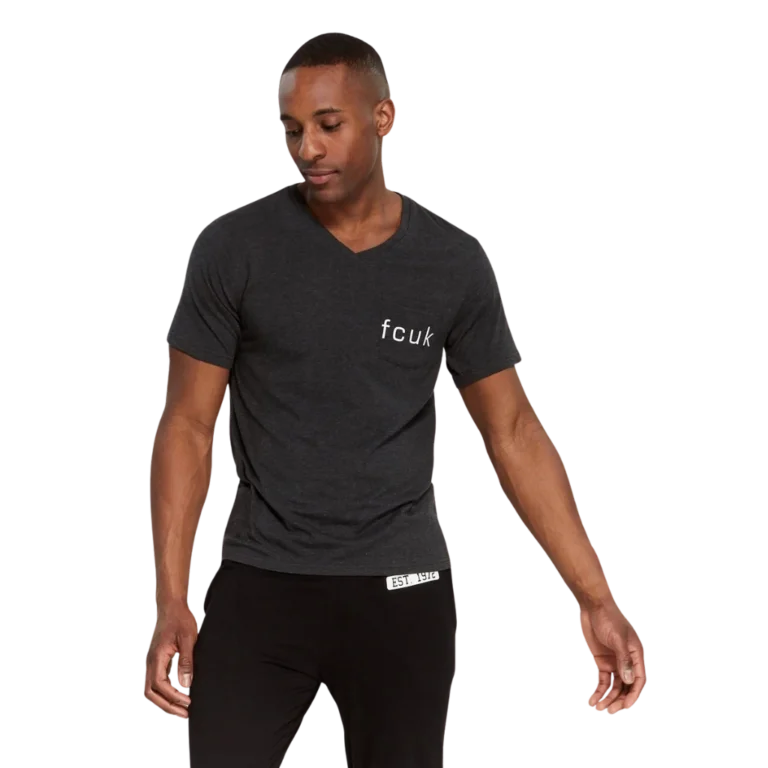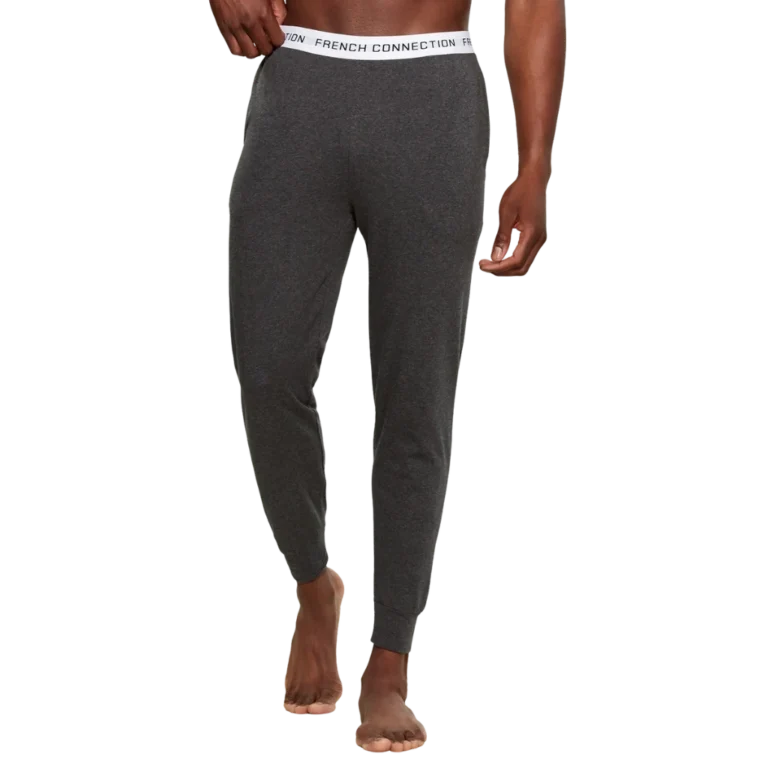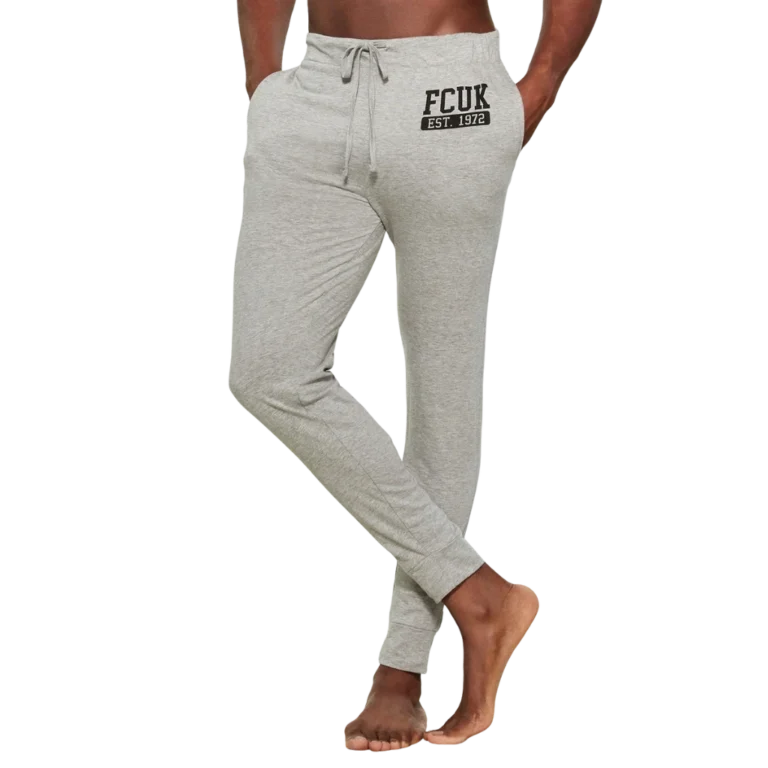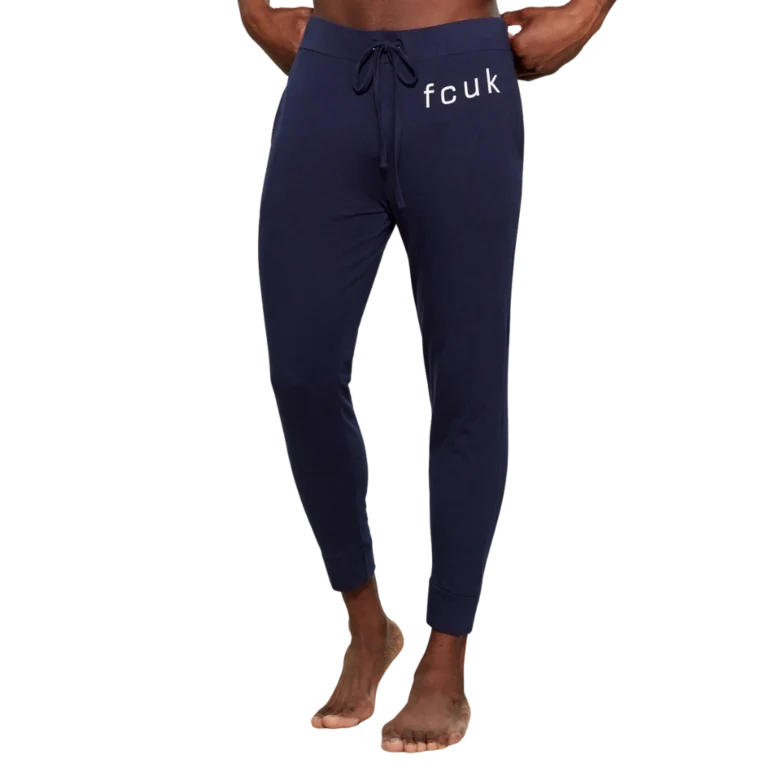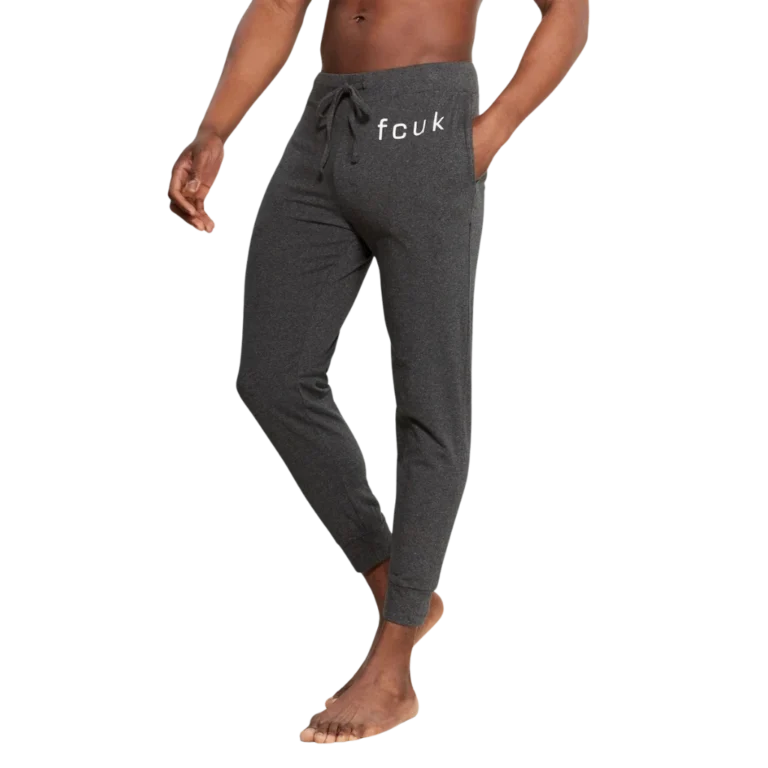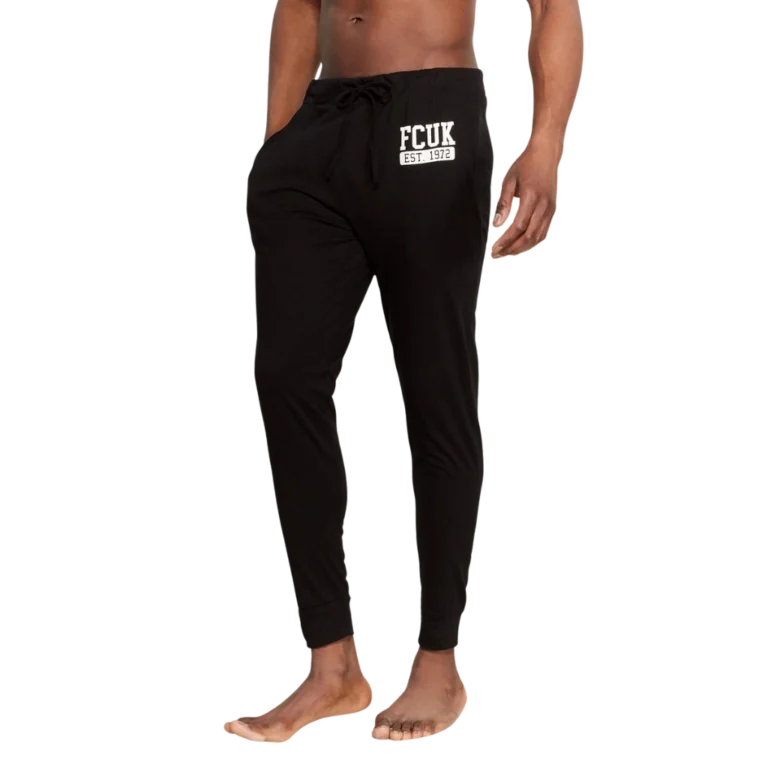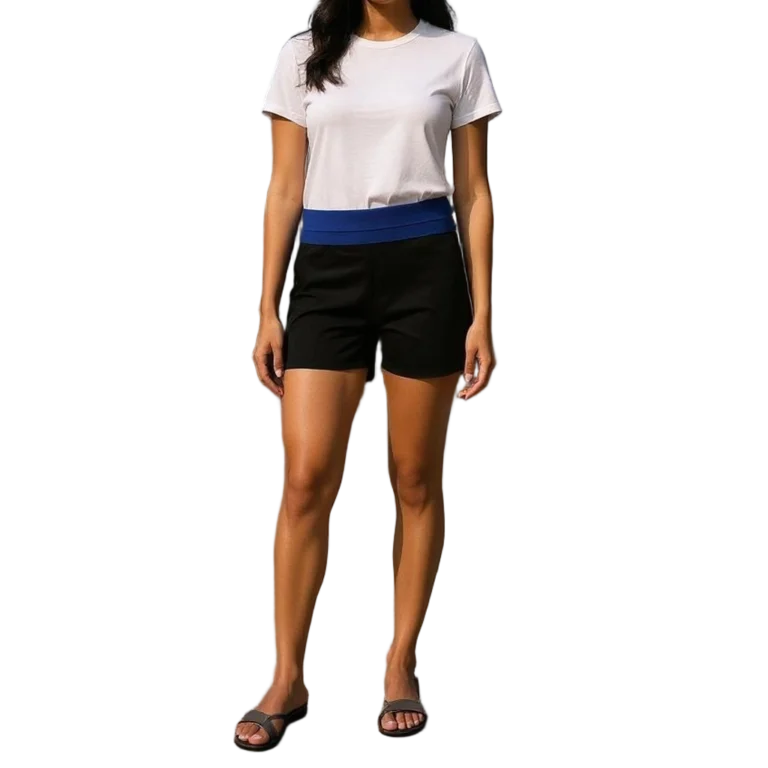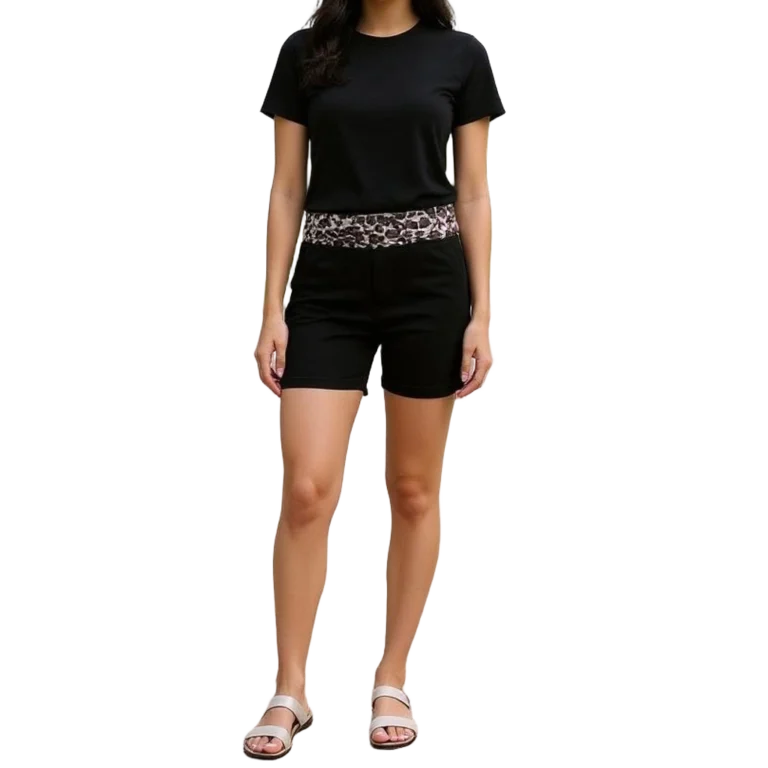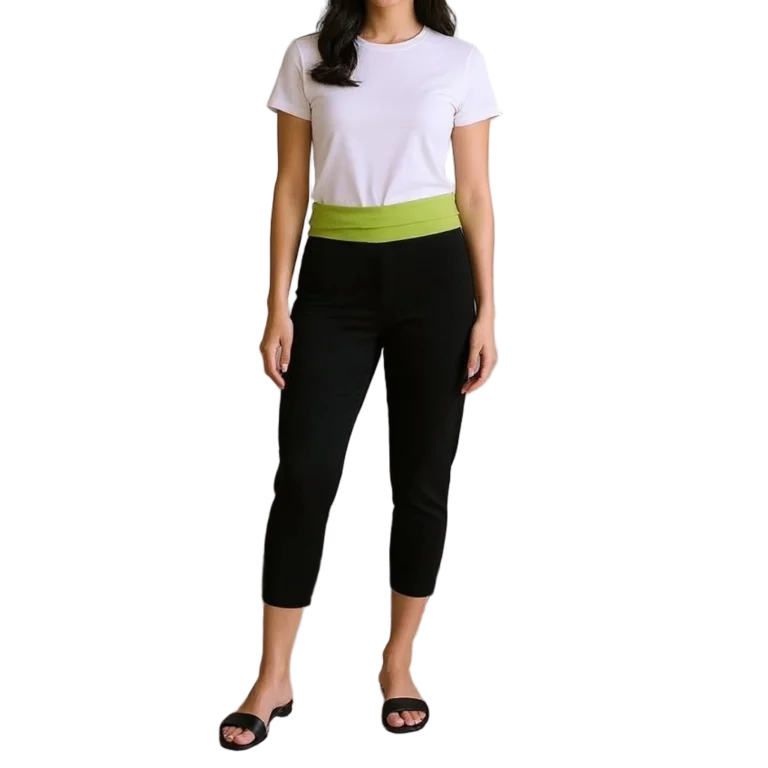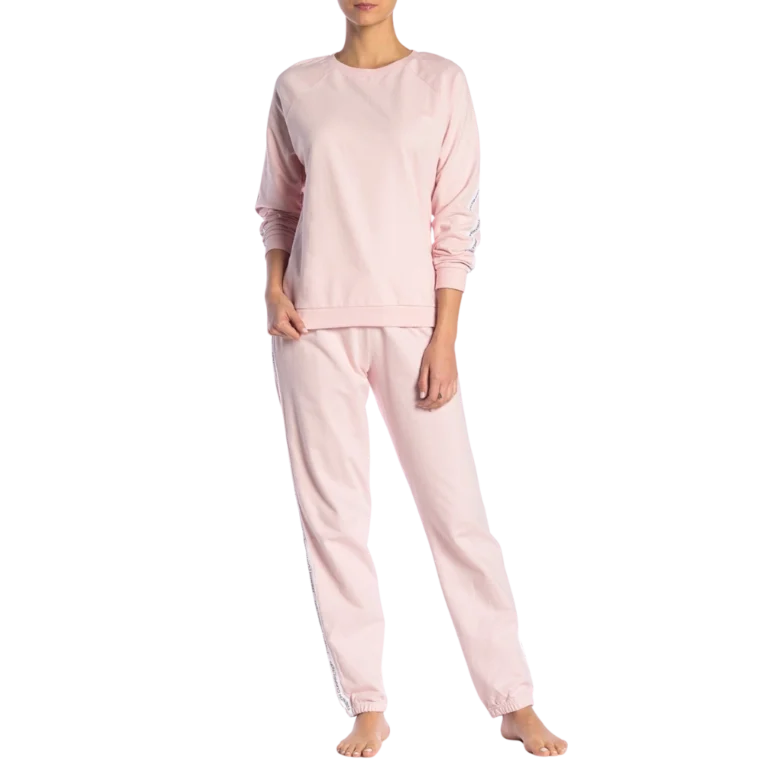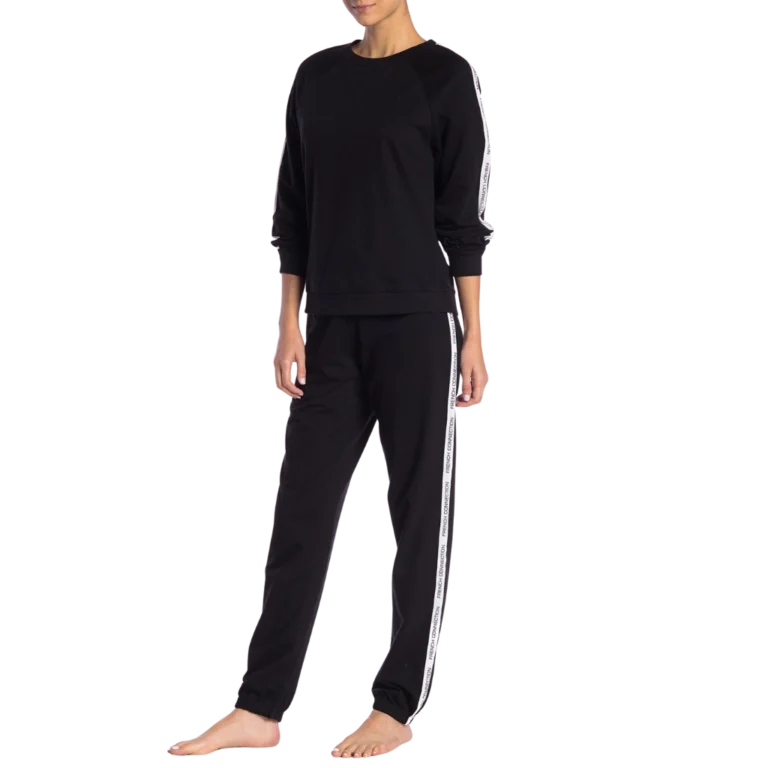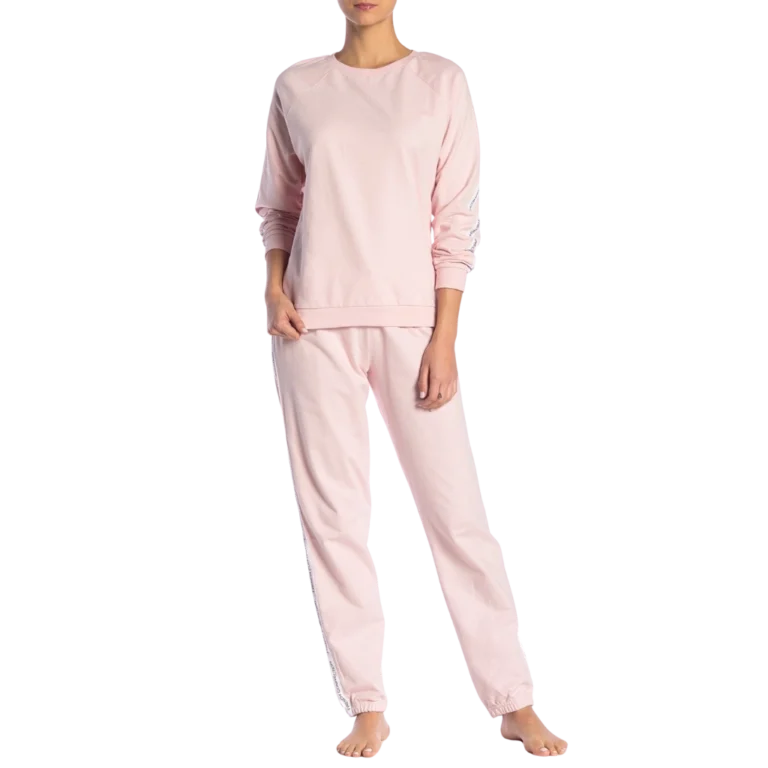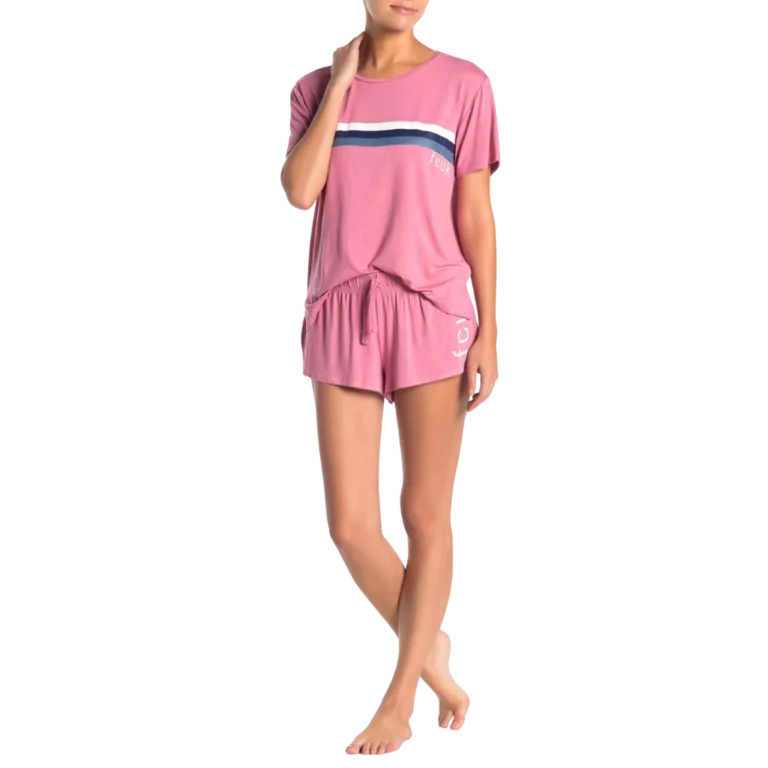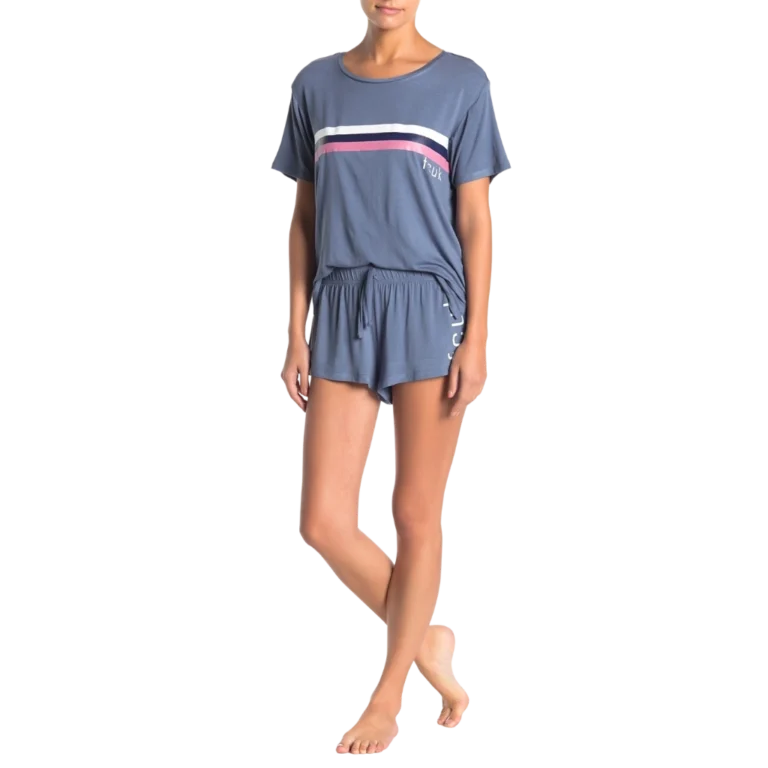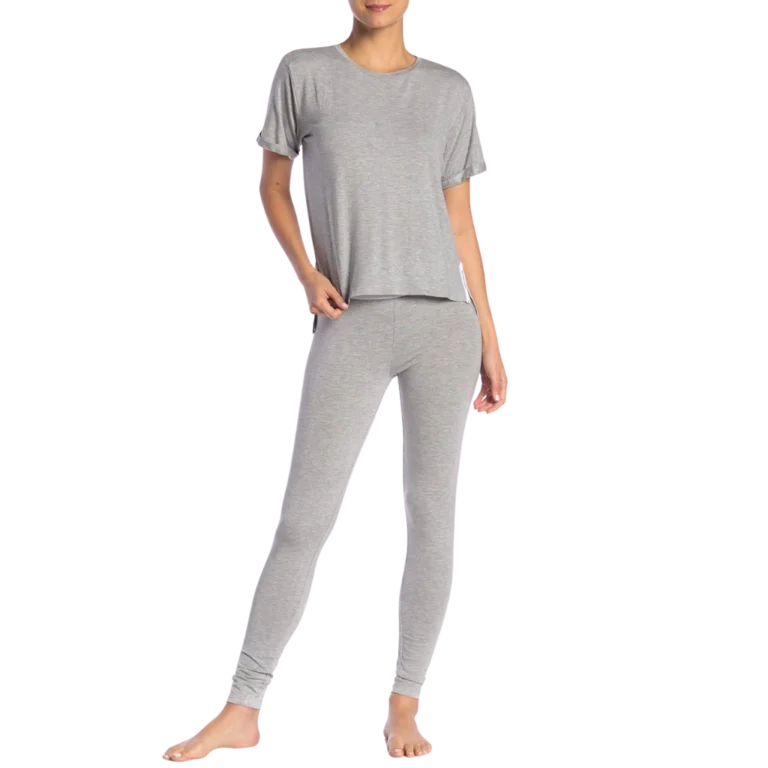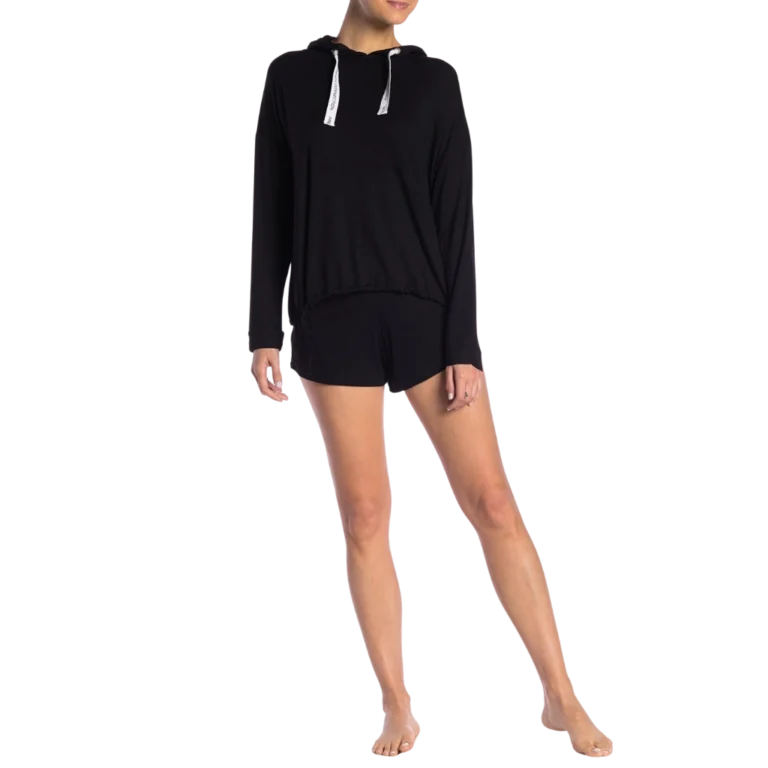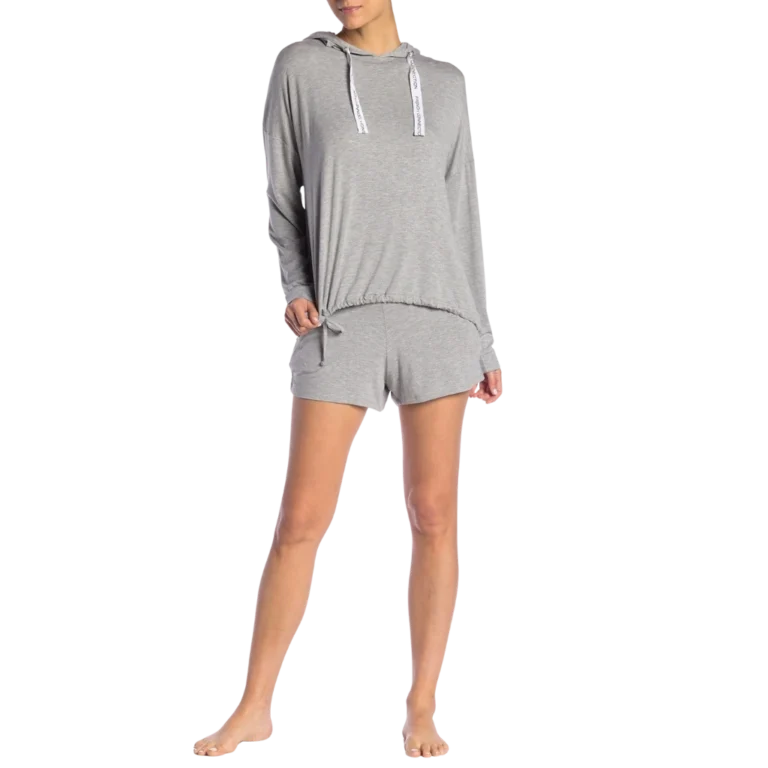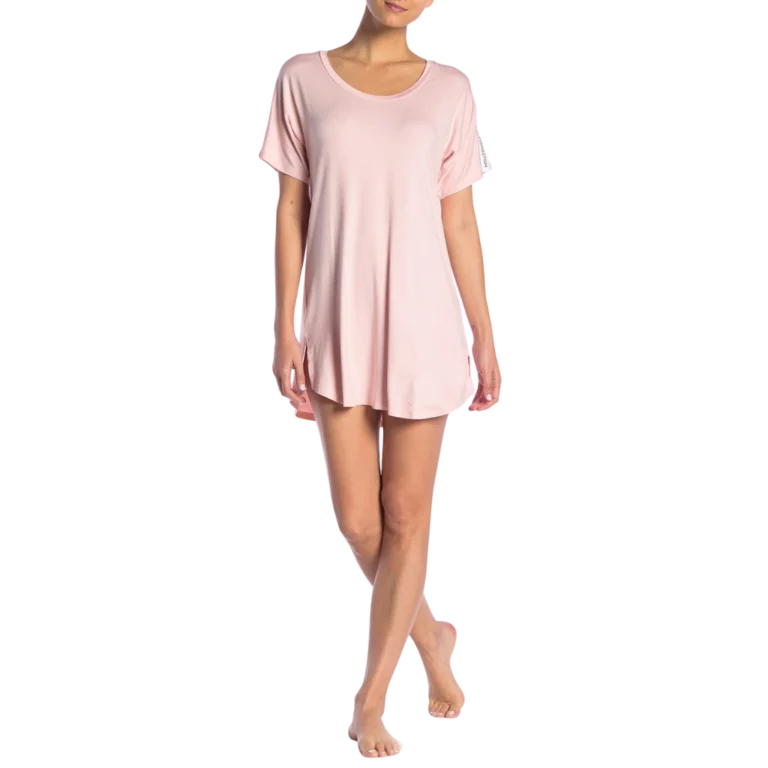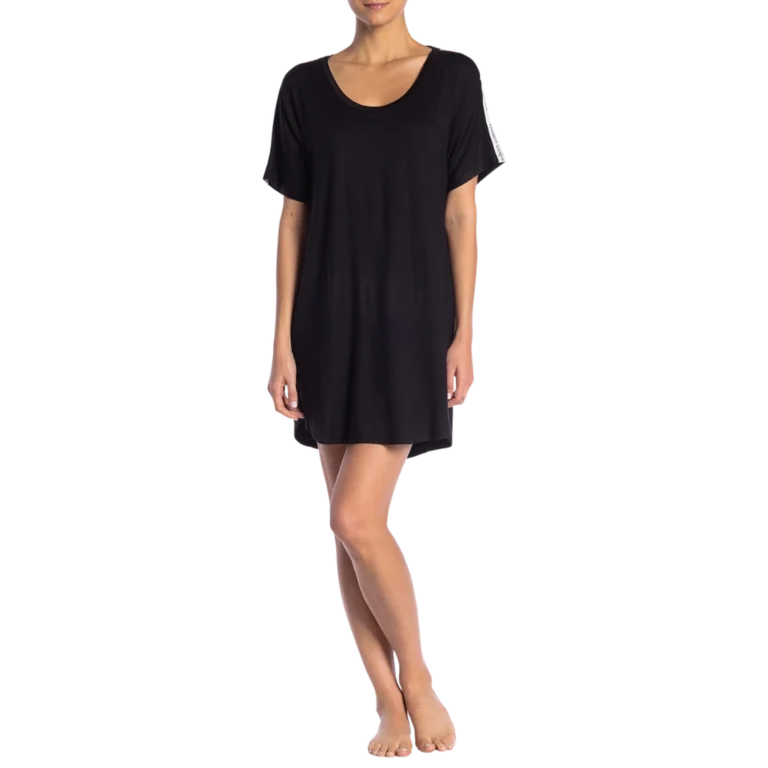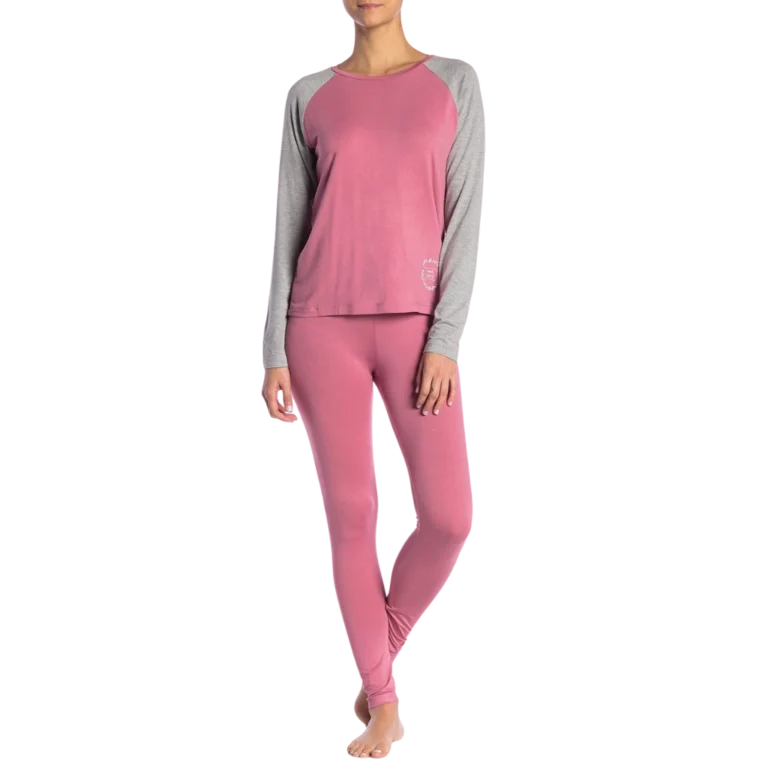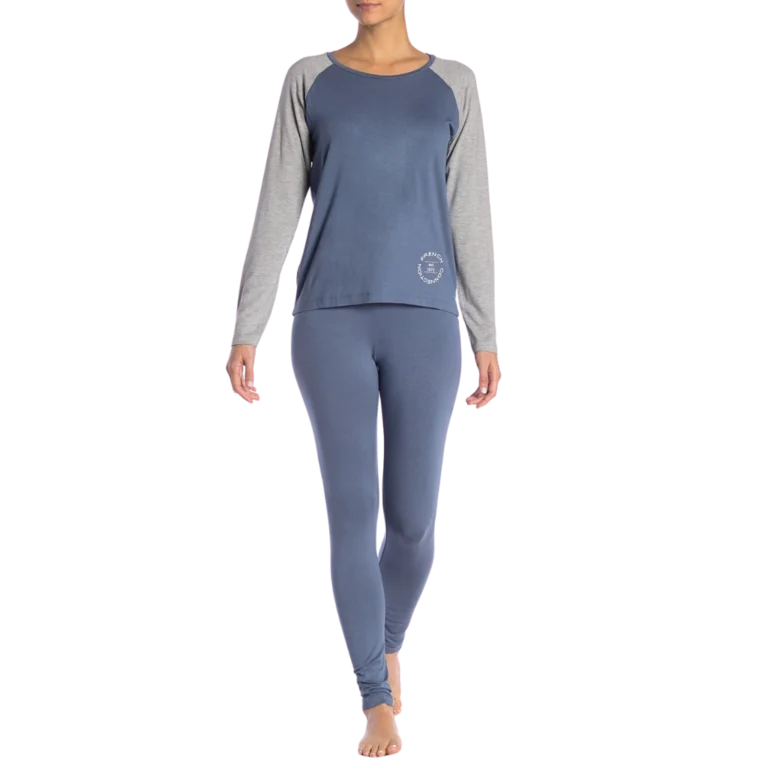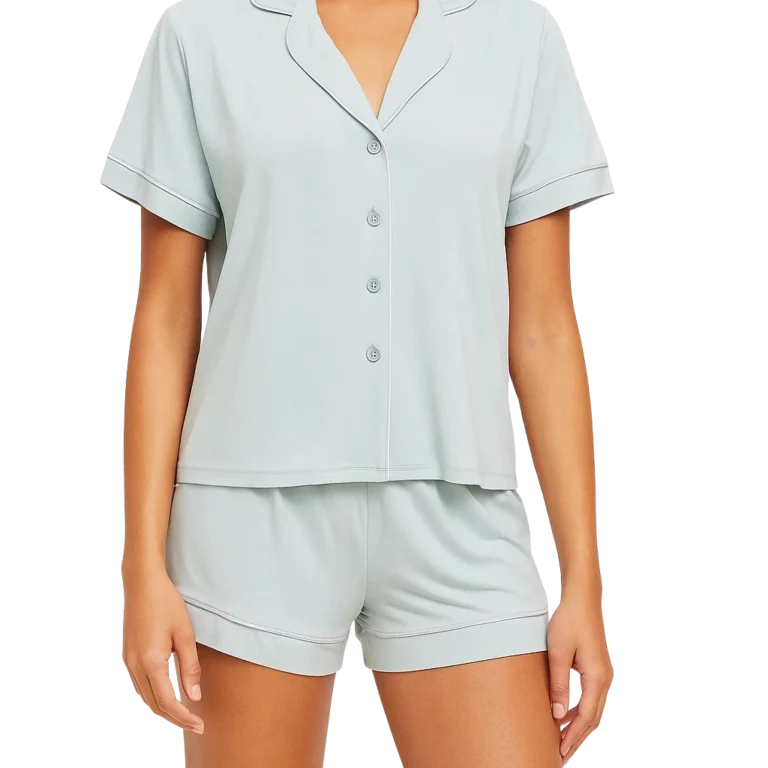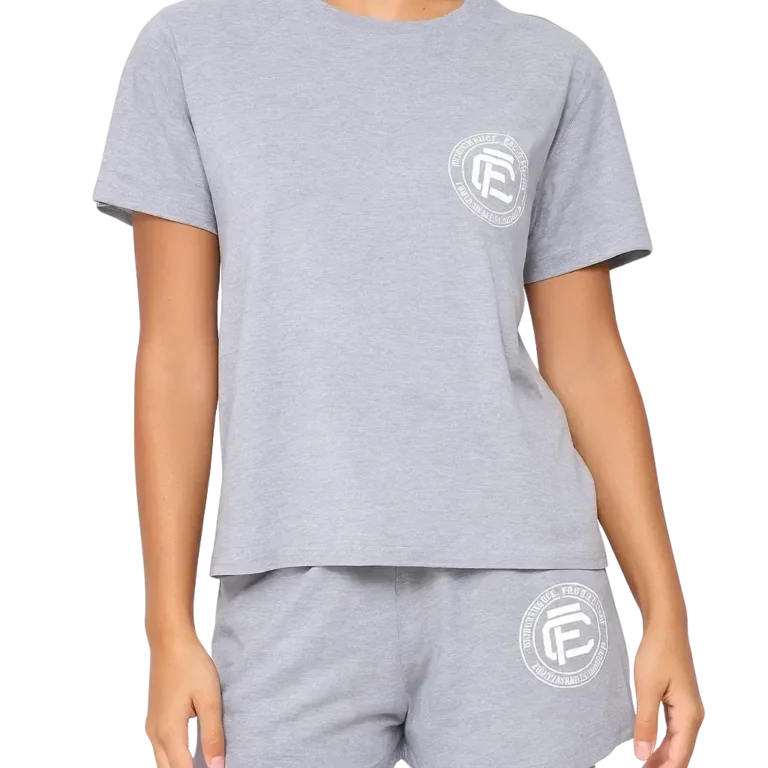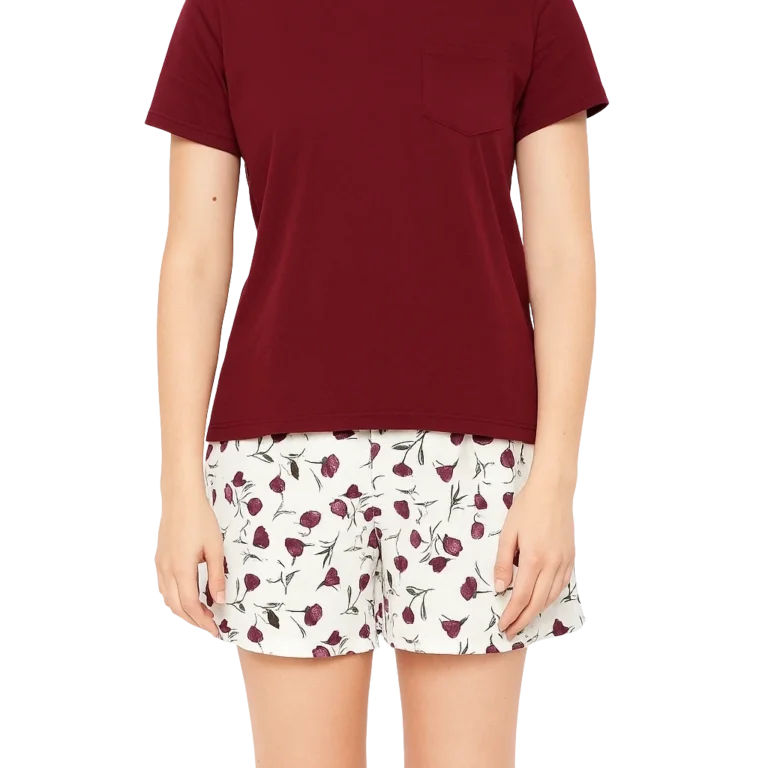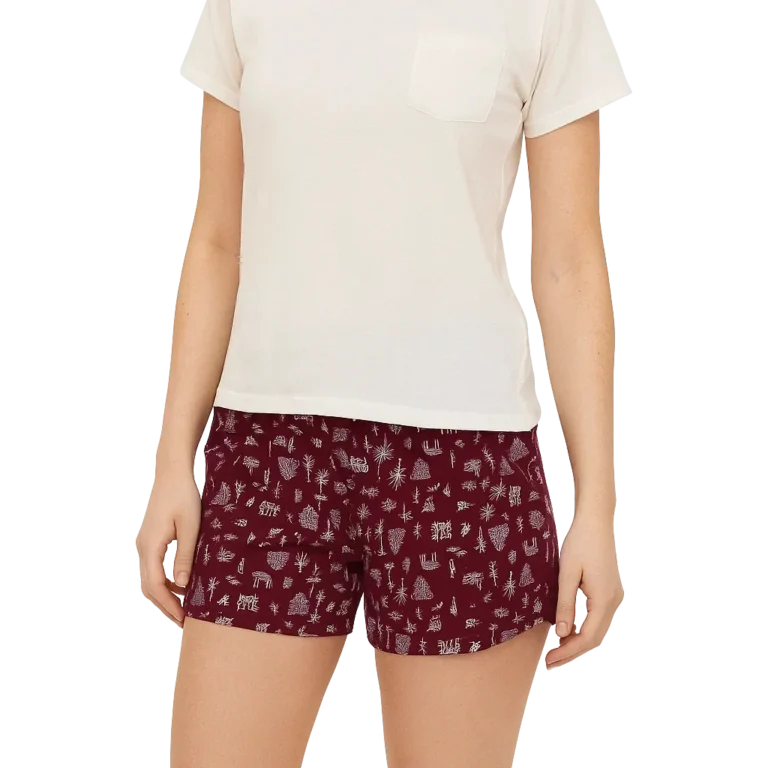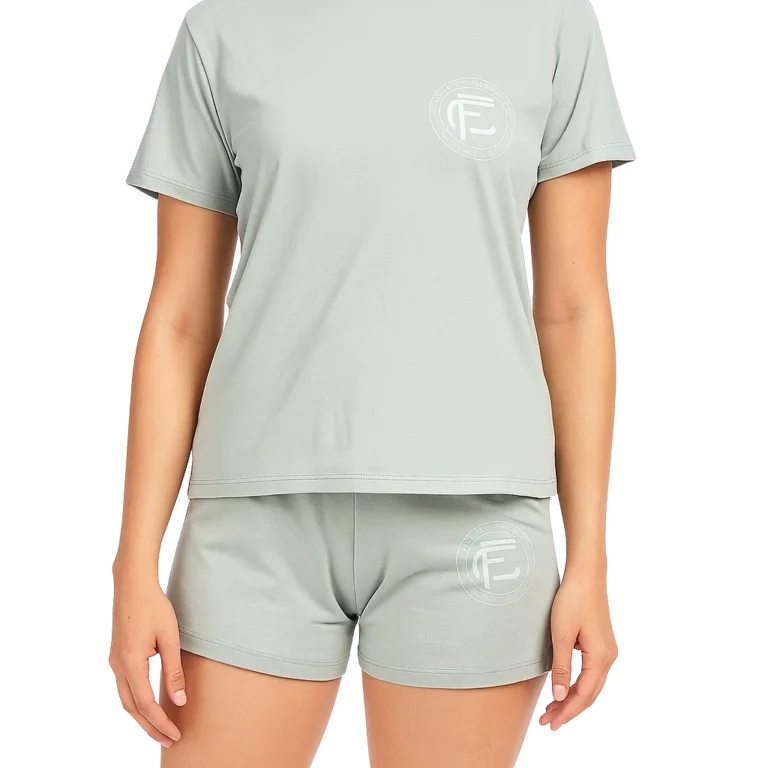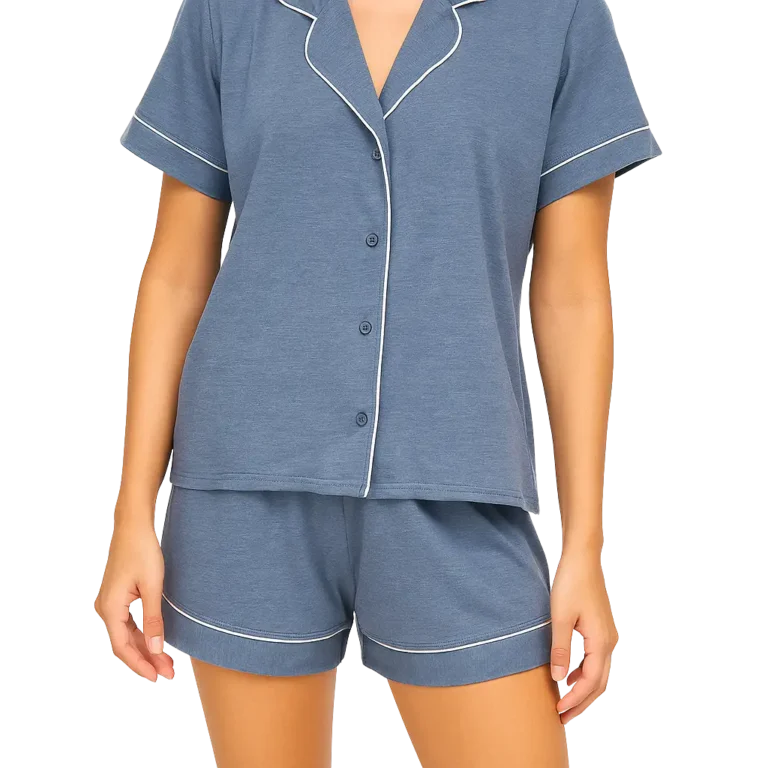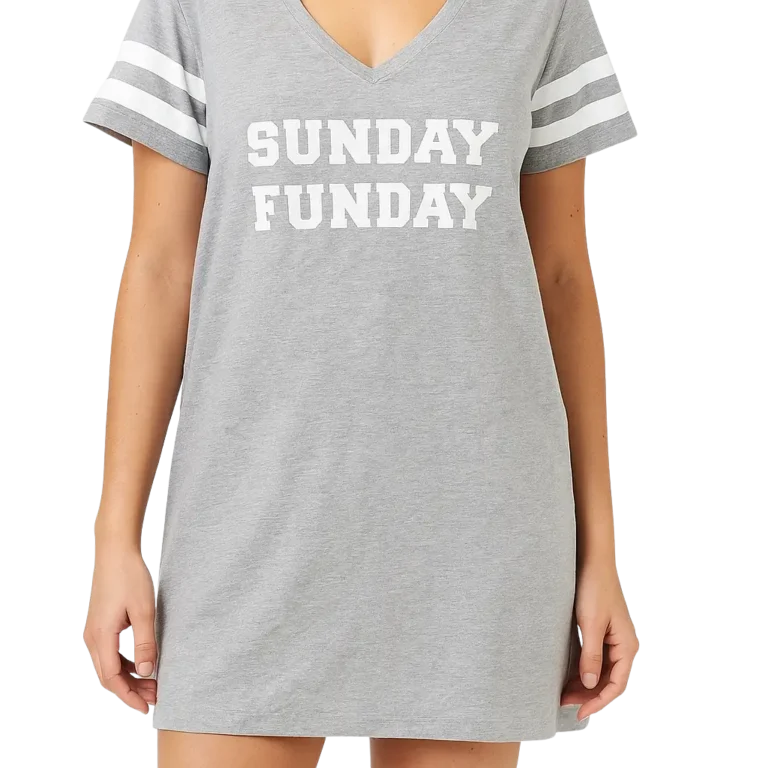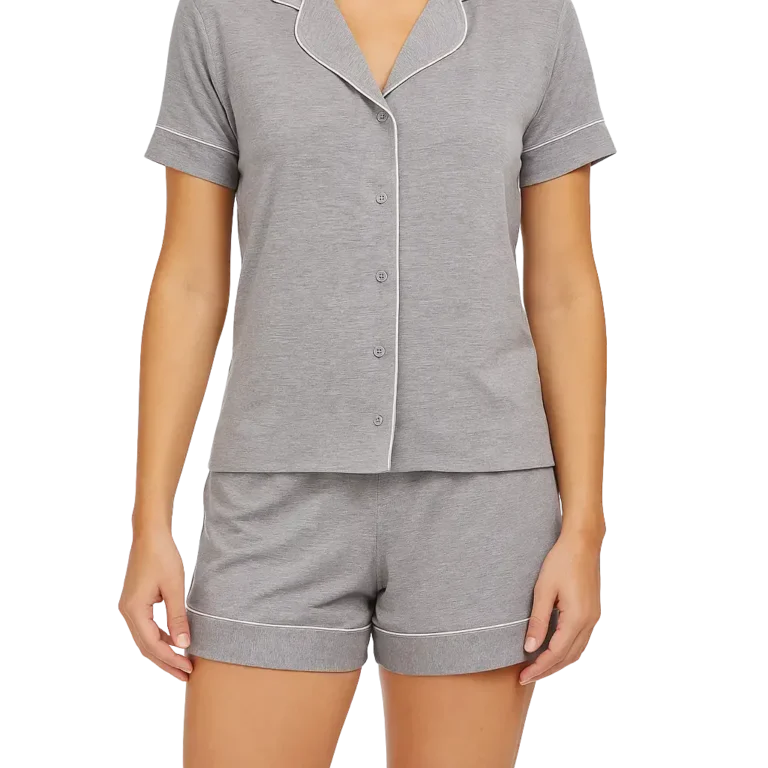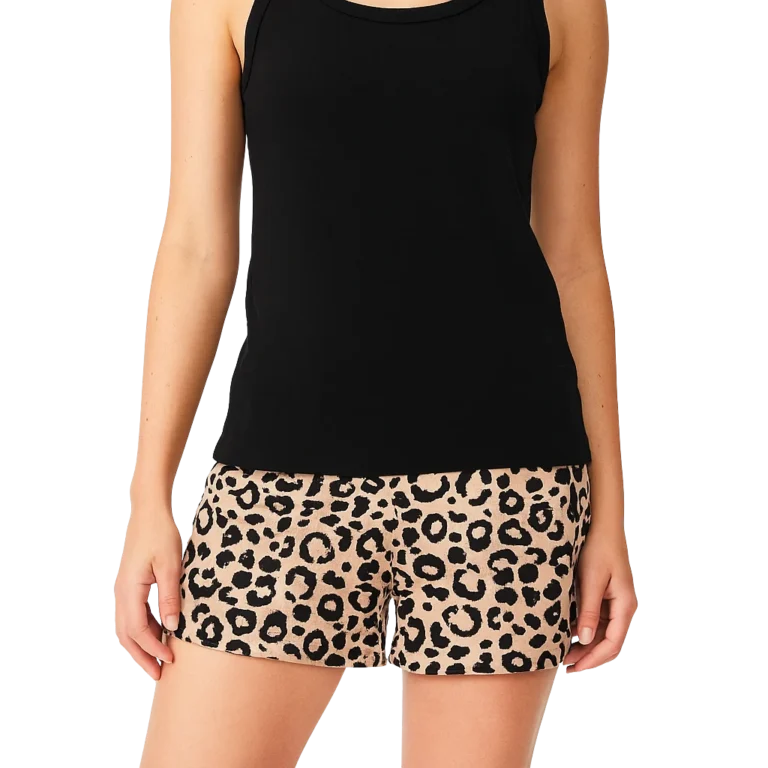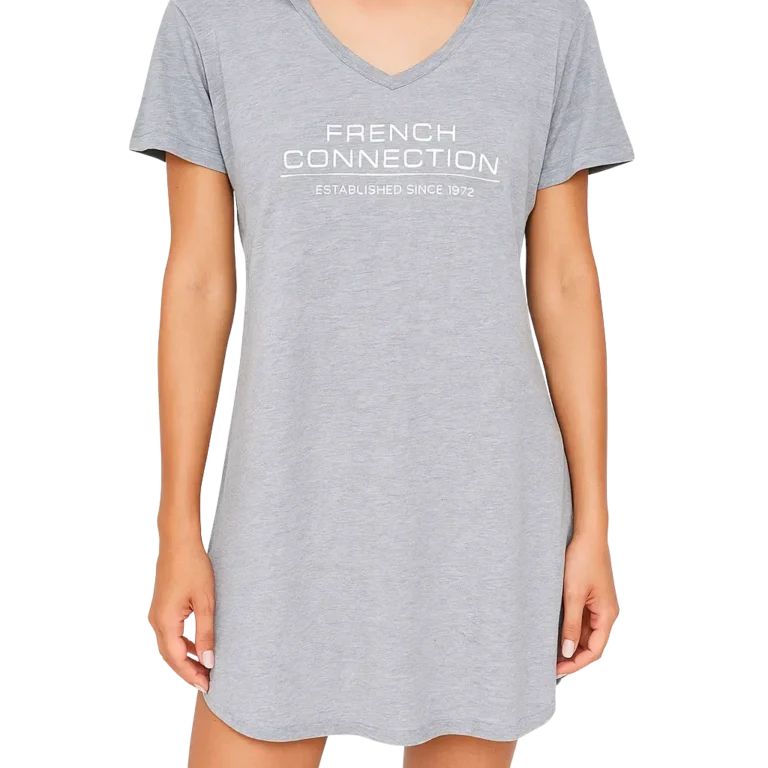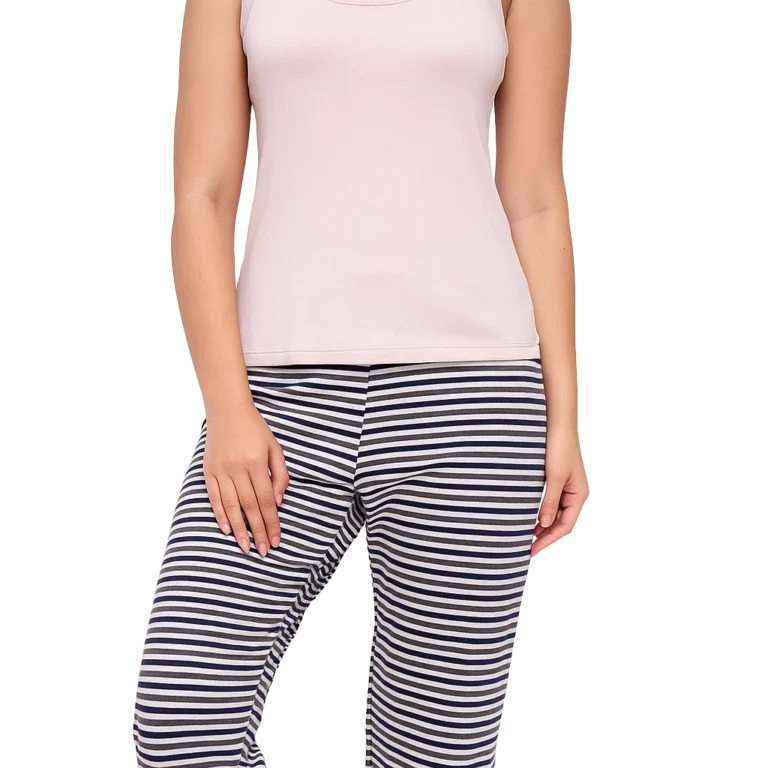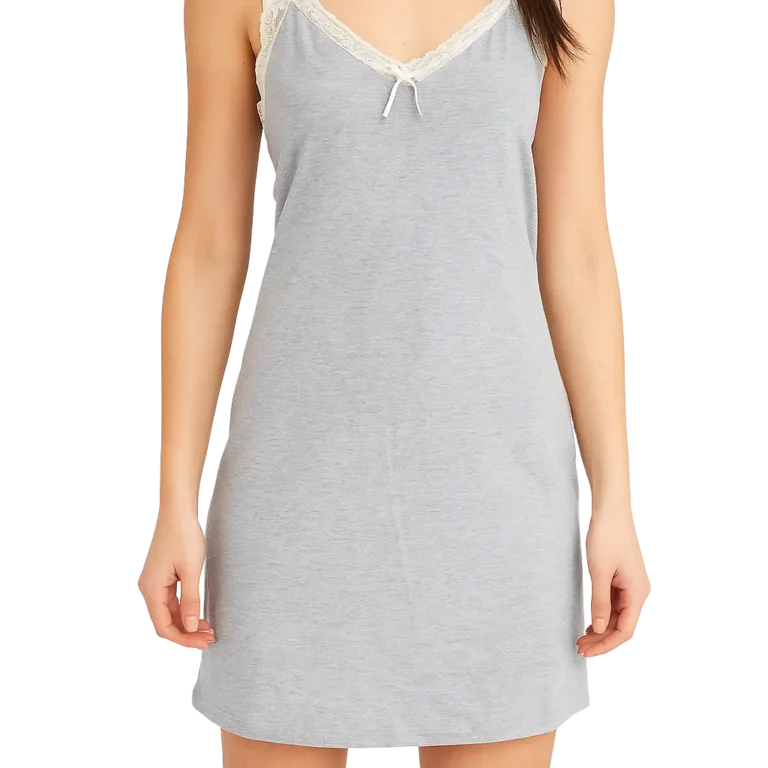A 90% polyester and 10% spandex jersey blend delivers the sweet spot of moisture management, stretch, snap-back, printability, and long-run durability for performance T-shirts. With the right yarn choice, knitting density, GSM, and finishing, this blend outperforms cotton for training and holds up better than high-nylon blends on colorfastness and cost. Read on for specs, testing, and sourcing tips.
Why the 90/10 poly-spandex blend dominates performance tees
Moisture management: Polyester filaments move sweat to the fabric face where it evaporates quickly. The surface can be engineered with micro-channels or cationic dyeable variants to improve wicking and drying time.
4-way stretch and recovery: Spandex at 10% delivers reliable stretch for dynamic movement while keeping the garment’s shape after repeated use and wash. Recovery is noticeably better than mechanical stretch poly.
Lightweight power: At 150 to 190 GSM single jersey or interlock, the fabric feels light while still opaque. This makes it comfortable in warm gyms and humid outdoor runs.
Dimensional stability: Proper heat setting of the knitted roll stabilizes the fabric so hem and neck do not distort. This is critical for slim athletic fits.
Color and graphics: Polyester holds color vibrantly and supports sublimation prints that become part of the fiber. Heat-transfer, screen print, DTG (poly pre-treat required), and reflective films also apply well.
Typical fabric constructions for 90/10 activewear T-shirts
Single Jersey, 150–180 GSM
Best for base layers and training tees. Smooth handfeel, great drape.Interlock, 160–190 GSM
Denser knit for enhanced opacity and richer print face.Mini Waffle or Honeycomb, 160–180 GSM
Micro-texture increases surface area for faster evaporation.Pique, 170–200 GSM
Sportier texture, popular in team training tees.
Quick spec table
| Parameter | Recommended Range | Buyer Notes |
|---|---|---|
| Composition | 90% Polyester, 10% Spandex | Filament polyester + covered spandex for stability |
| Yarn Type | 75D–100D filament poly, 20D–40D spandex | Finer filaments feel softer and dry faster |
| GSM | 150–190 | Choose 160–170 for hot climates, 180–190 for opacity |
| Stretch | 15–25% width, 10–20% length | Depends on knit density and spandex denier |
| Recovery | ≥90% to original length | Driven by heat setting and spandex quality |
| Finishes | Wicking, anti-microbial, anti-pilling, softener | Choose based on end use and care claims |
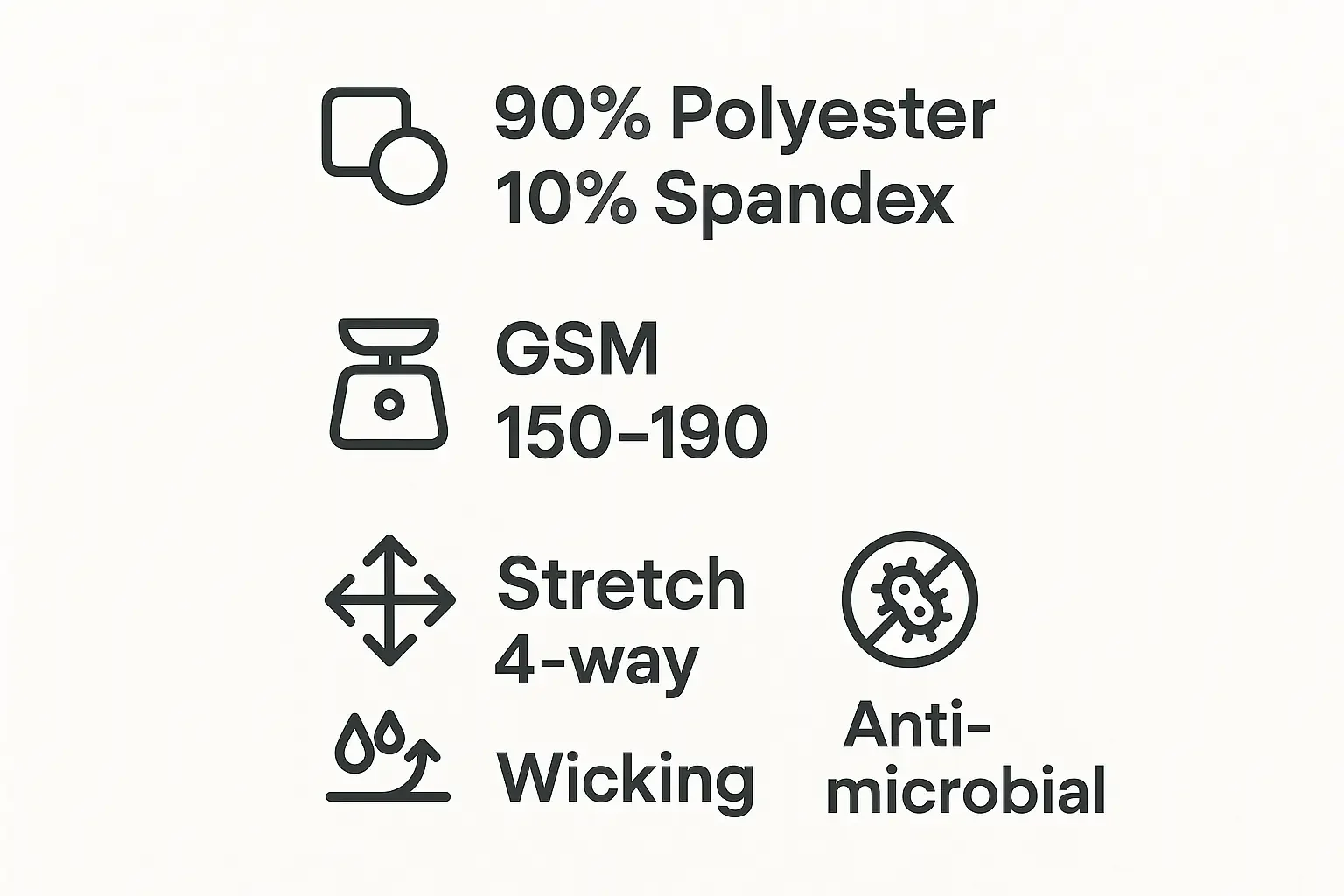
Performance factors that matter to buyers
1) Wicking and dry time
Ask for quantitative tests like vertical wicking height and drying time under controlled RH and temperature. For teamwear and gym retail, fabrics that dry in under 20 minutes after saturation offer a clear comfort boost.
2) Stretch, recovery, and bagging
Lab-test to 20% extension and check recovery after 30 seconds. Recovery above 90% keeps the garment silhouette sharp even after long sessions.
3) Opacity and show-through
In lighter GSM, interlock or a tighter single jersey reduces transparency without adding weight. This is crucial for women’s activewear.
4) Pilling resistance
Filament poly is resilient. Adding an anti-pilling finish helps the garment stay retail-fresh after repeated friction from straps and gym equipment.
5) Odor management
Polyester can retain odor if not treated. Consider anti-microbial or anti-odor finishes for premium lines.
6) Colorfastness
Check colorfastness to perspiration and washing. For sublimated graphics, expect excellent migration resistance if the base fabric is properly heat set.
Printing and embellishment on 90/10 Activewear T Shirts
Sublimation: The gold standard for all-over graphics and vibrant teamwear. Requires a light or white base body. Colors fuse into the fiber so there is no hand feel.
Screen print and plastisol: Works well with proper underbase and low-bleed inks. Use migration blockers on dark or neon colors.
Heat transfer and reflective: Ideal for logos and numbers. Choose stretch transfers designed for elastane fabrics.
Embroidery: Possible, but add a lightweight tricot backing to prevent tunneling. For performance tees, most brands prefer print or heat transfer to keep the chest breathable.
90/10 vs other common blends
Versus 100% polyester:
Better stretch and body contouring, improved recovery, higher comfort in dynamic movement. Slightly higher cost due to spandex.
Versus 92/8 or 95/5 poly-spandex:
10% delivers more consistent recovery for slim athletic fits, especially in larger sizes. 5–8% is fine for relaxed tees.
Versus cotton or cotton-rich:
Cotton feels natural but absorbs moisture, becomes heavy, and dries slowly. For high-sweat workouts, 90/10 outperforms on dryness and shape retention.
Sourcing checklist for private-label buyers
Use this list to move from sampling to consistent bulk production.
Define the GSM range by climate and opacity targets.
Choose knit structure based on use case: single jersey for training basics, interlock for premium hand, mini waffle for heat dissipation.
Specify yarn and spandex denier to lock in stretch and recovery.
Add functional finishes only when justified by the price point.
Confirm shade continuity across sizes and panels, especially for sublimation whites.
Set test methods for wicking, drying time, stretch recovery, colorfastness to perspiration, pilling, and dimensional stability.
Approve print method and run strike-offs on production fabric.
Fit block and grading for athletic silhouettes with forward shoulder and underarm mobility.
Packaging for performance with breathable polybags or vent holes to reduce trapped moisture during transit.
QC plan including in-line stretch checks and post-wash measurements.
Care and longevity
Machine wash cold, gentle cycle.
Avoid fabric softeners if anti-microbial finish is applied.
Tumble dry low or hang dry to preserve elastane.
Do not iron directly on prints or reflective transfers.
Wash inside out to reduce surface abrasion.
With these practices, a 90/10 active tee maintains recovery and color for significantly longer than cotton tees with the same usage.
Example tech pack spec block (copy and adapt)
Product: Men’s Activewear T Shirts
Fabric: 90% Polyester / 10% Spandex, Single Jersey, 170 GSM
Yarn: 75D polyester filament, 30D spandex, heat set
Finish: Wicking + anti-pilling
Color: Deep Navy, Jet Black, White
Stretch Target: 20% width, 12% length, recovery ≥ 90%
Fit: Athletic, forward shoulder, curved hem, raglan option
Stitching: 6–8 SPI, flatlock at critical seams
Graphics: Sublimation for white base, reflective heat transfer for logos
Tests: Wicking height ≥ 4 cm/30 min, drying time ≤ 20 min, pilling ≥ Grade 4 after 5k rubs, colorfastness to perspiration ≥ Grade 4
Care: Wash cold, no softeners, low tumble or line dry
Sustainability considerations
While polyester is synthetic, there are responsible choices.
Recycled polyester: Use GRS-certified recycled poly for reduced virgin petroleum use.
Low-impact dyeing: Cationic poly can reduce re-dye cycles for brights.
Durability as sustainability: High recovery and anti-pilling finishes extend lifetime, lowering total impact per wear.
Responsible packaging: Recyclable polybags, carton optimization, and minimal ink coverage.
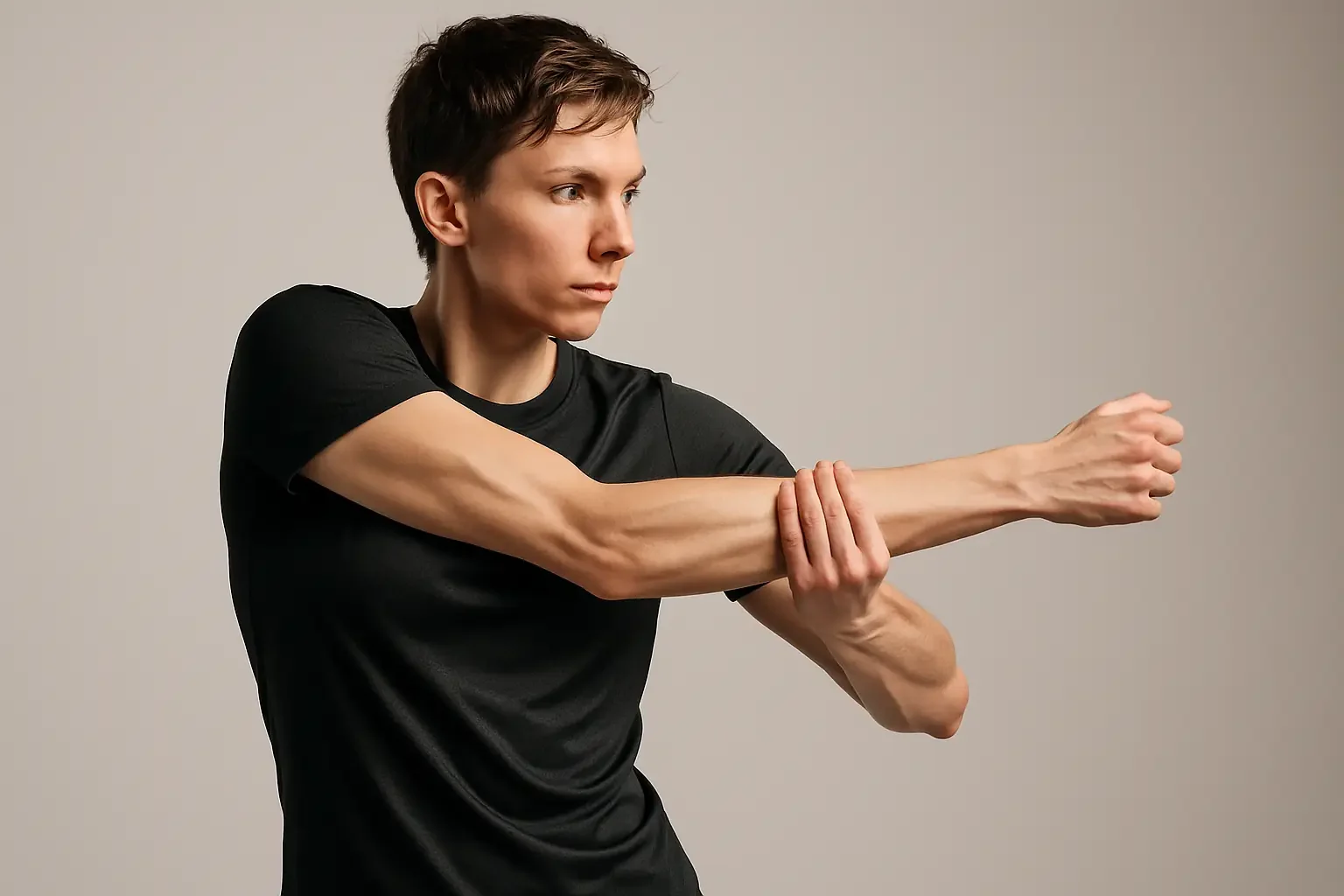
Ready to develop your 90/10 line?
Mirthuni Apparel Sourcing Service manufactures private-label activewear in Tiruppur with production-ready 90/10 fabrics. Share your tech pack, fabric preference, GSM target, and print method. We will revert with strike-off options, lab test plan, and a transparent quote based on your estimated order volume.

